In conversation with material
"A craft practitioner engages in a non-linguistic dialogue with his or her material."
Earth, Wind, Fire, Water (Berger, Kjellevold, 2020)
I am consistently researching my material to the same value as I research fellow practitioners. It is one of the same. I gather new meanings and emotions from the natural materials that I am surrounded by, and that I go and gather for. The book I am currently reading, Earth, Wind, Fire, Water puts this notion eloquently into text. The philosopher Ingar Brinck and psychologist Vasudevi Reddy write about how material dialogue has an emotional engagement in order to gain more sense of the world at large. They examine the communicative, emotive relationship people have with clay, as they consider clay to be the "most approachable material as a conversational partner." (Brink and Reddy, Dialogue in the Making,)
Through my research, I will be exploring humans relationships, interactions and emotions towards the art of making in the natural world, and how the materiality of clay and physical connection with material can provoke an interrelation with emotion and making.
Placement at Manchester Craft and Design Centre
This summer I spent a month at Manchester Craft and Design Centre as part of my placement. I was prodominantly working with the team in the office, getting to know all different sides of making a business out of craft, and learning about the behind the scenes of a craft workplace. It was an amazing opportunity as I was able to talk to lots of different makers who had their workshops and shops at the craft centre, and find out about how they make a living out of their craft.
I was also able to spend time with Sue Cragg, a ceramist at MCAD, who gave me private tuition on throwing on a wheel. I also shadowed her for a day, where I was with her in her shop, to observe her selling pieces, packaging pieces and helping with the display of her shop. This was an invaluable experience for me and I am really grateful for Sue for giving me this opportunity.
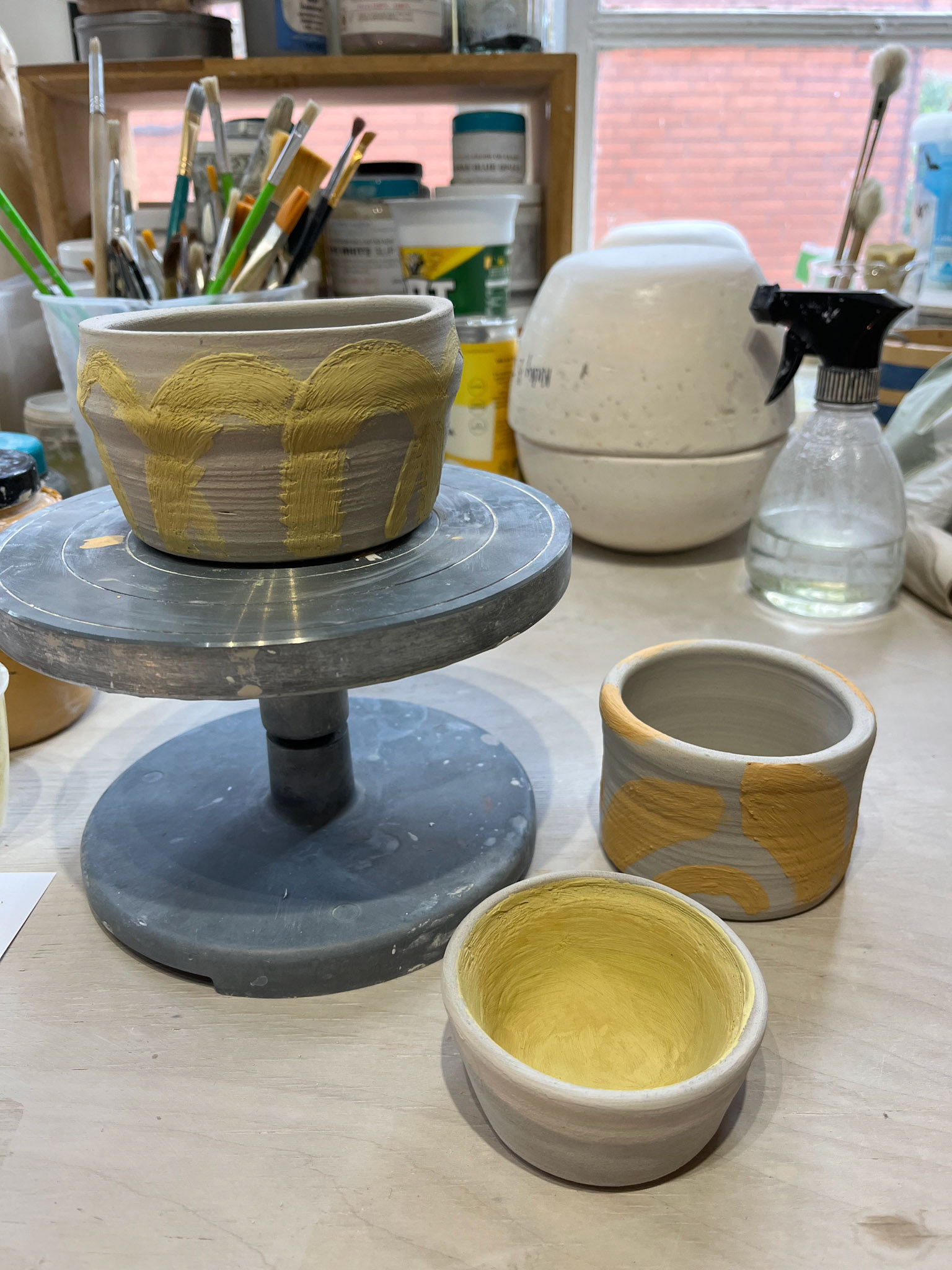

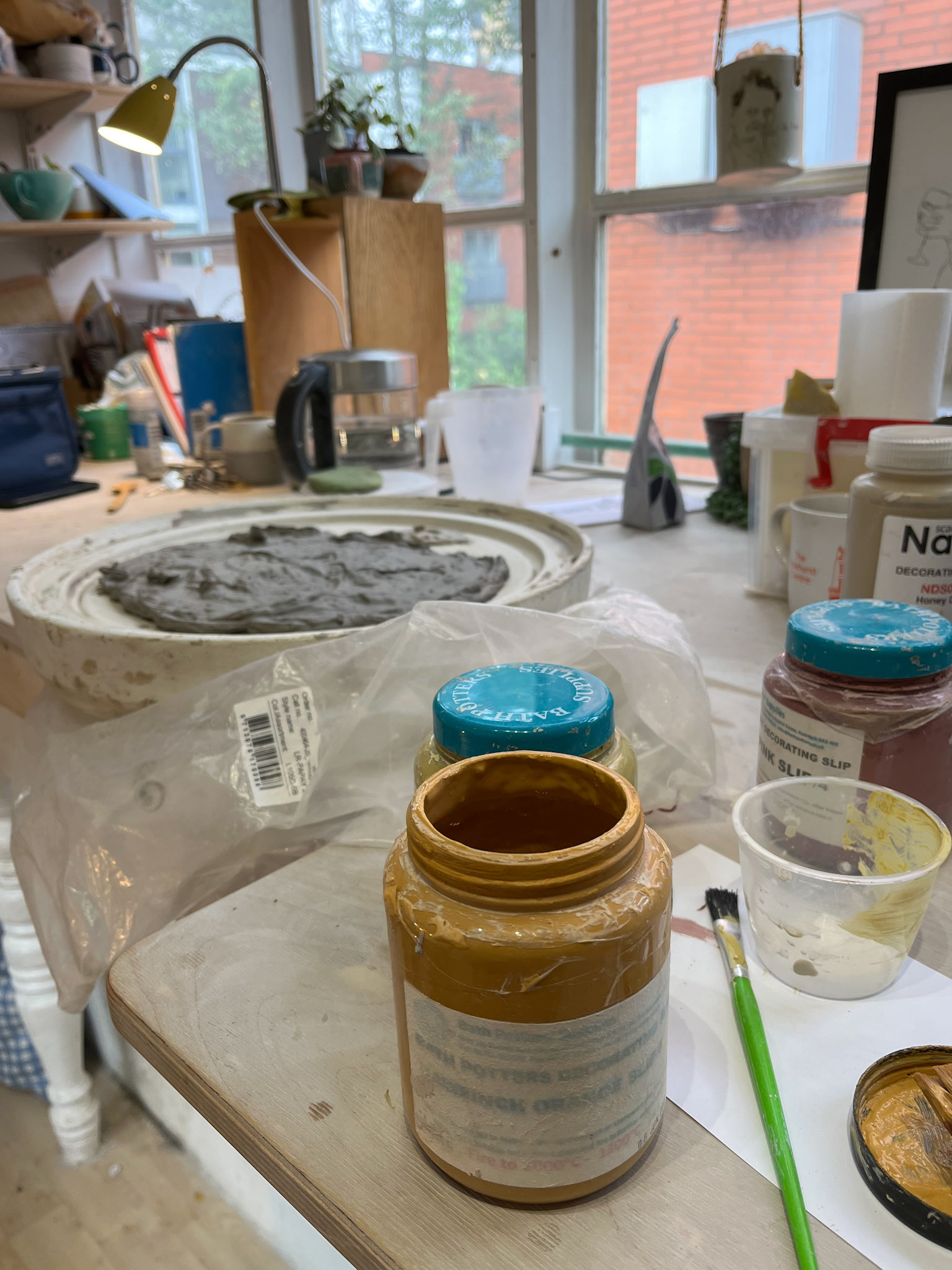
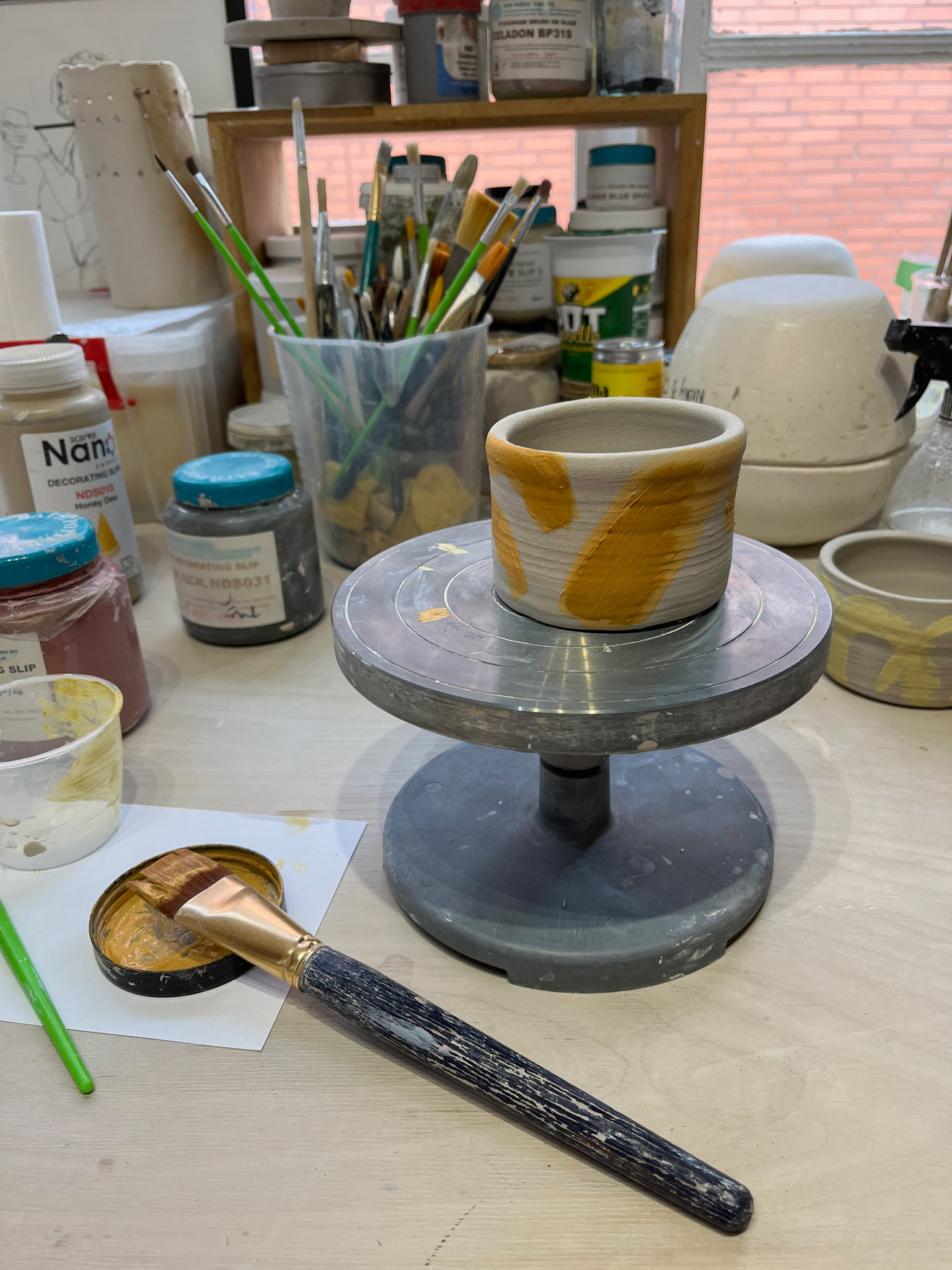
Great Northern Contemporary craft Fair 2024
GNCCF Committee
I was part of the committee for our sample progress exhibition at Great Northern Contemporary Craft Fair. This involved helping out with the set up for our exhibition, making the legs for the curation of the set up and advertising the fair. I really enjoyed working in a small group to make our exhibition successful.
Initial photos of the space
On one of the first meetings, we received photos of the exhibition space in which we will be exhibiting our work. We were told that due to the space being a heritage site, we were not able to do anything with the walls or attach anything to the walls. As it is a very old room with a lot of history, we wanted to honour this through the curation of our work.
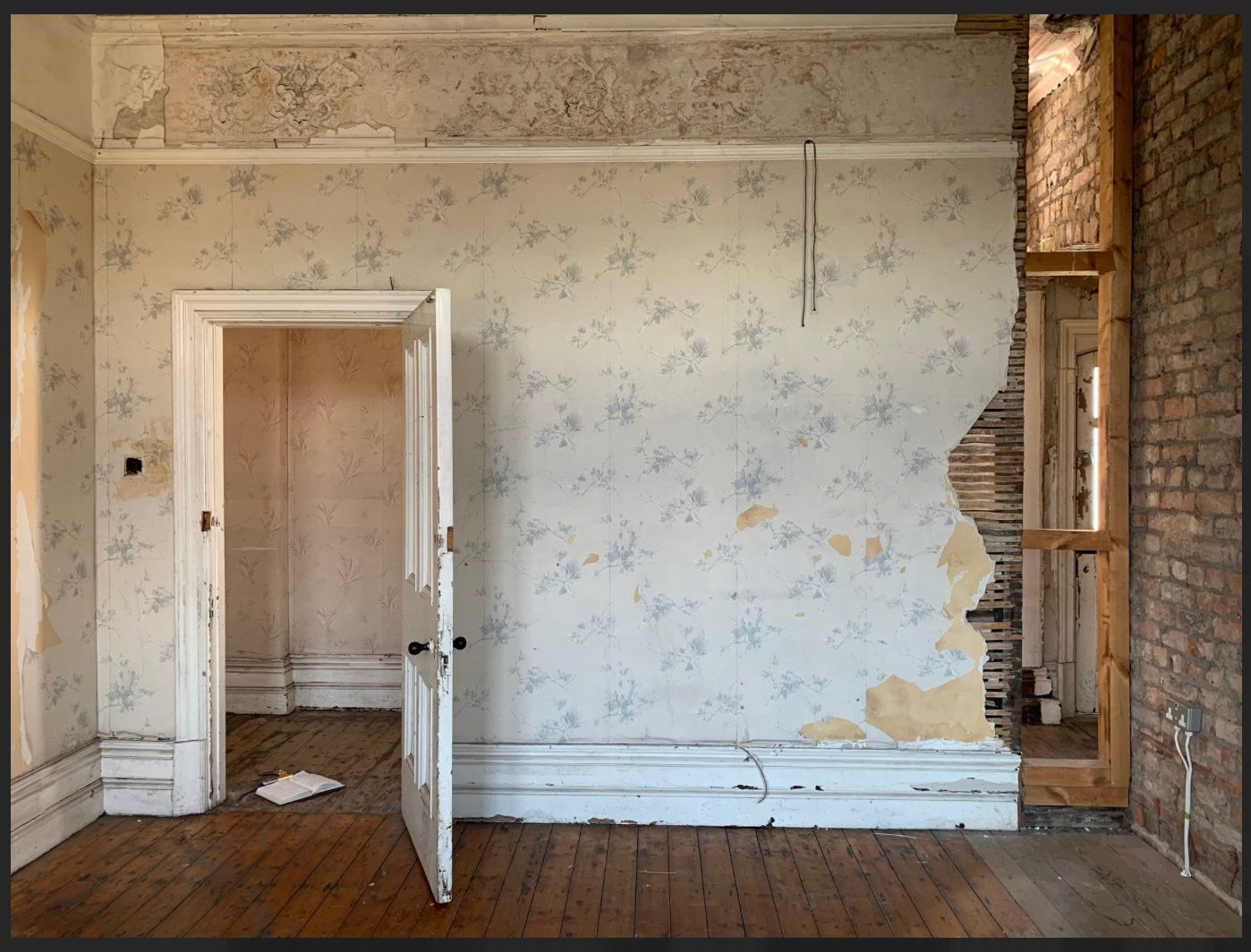

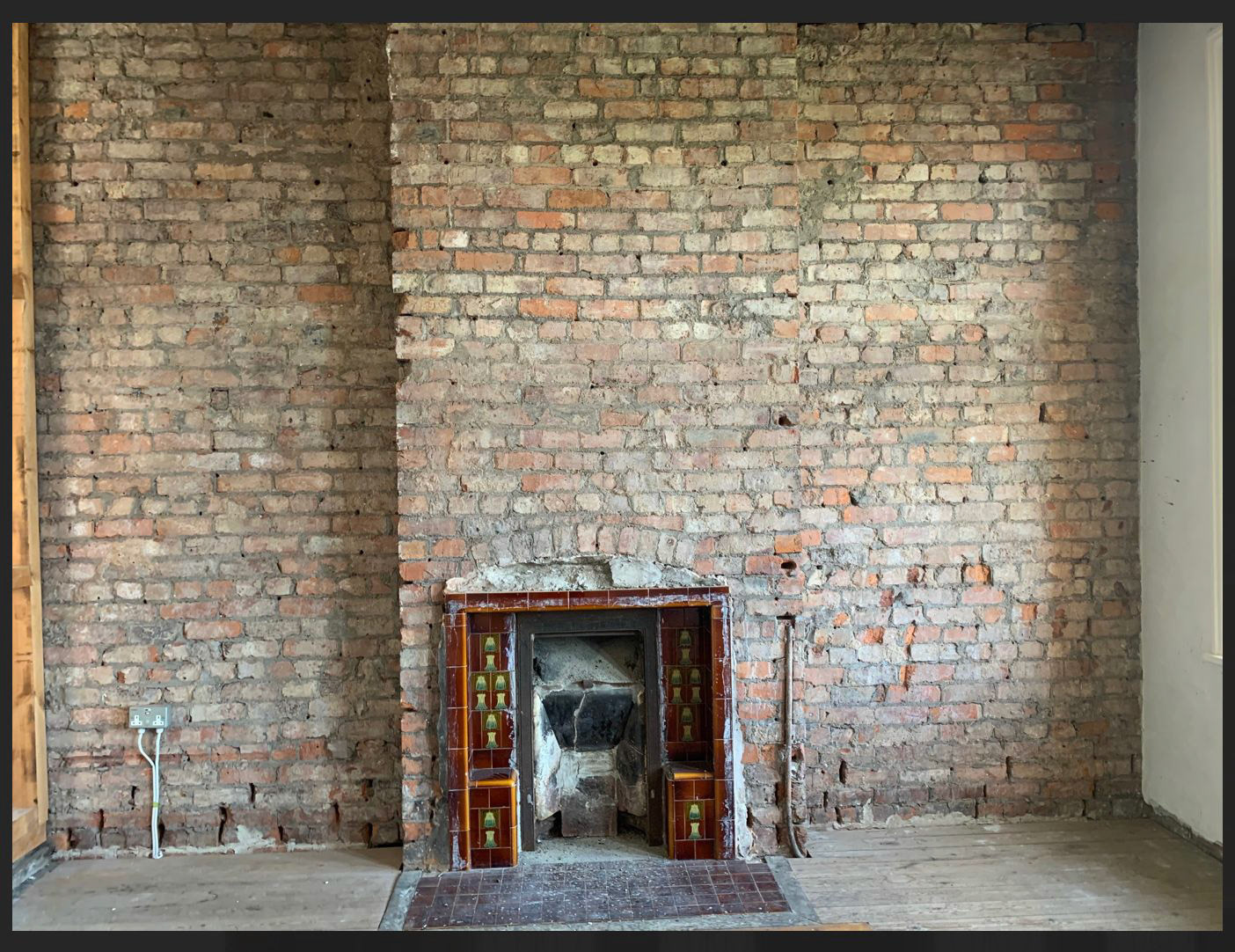
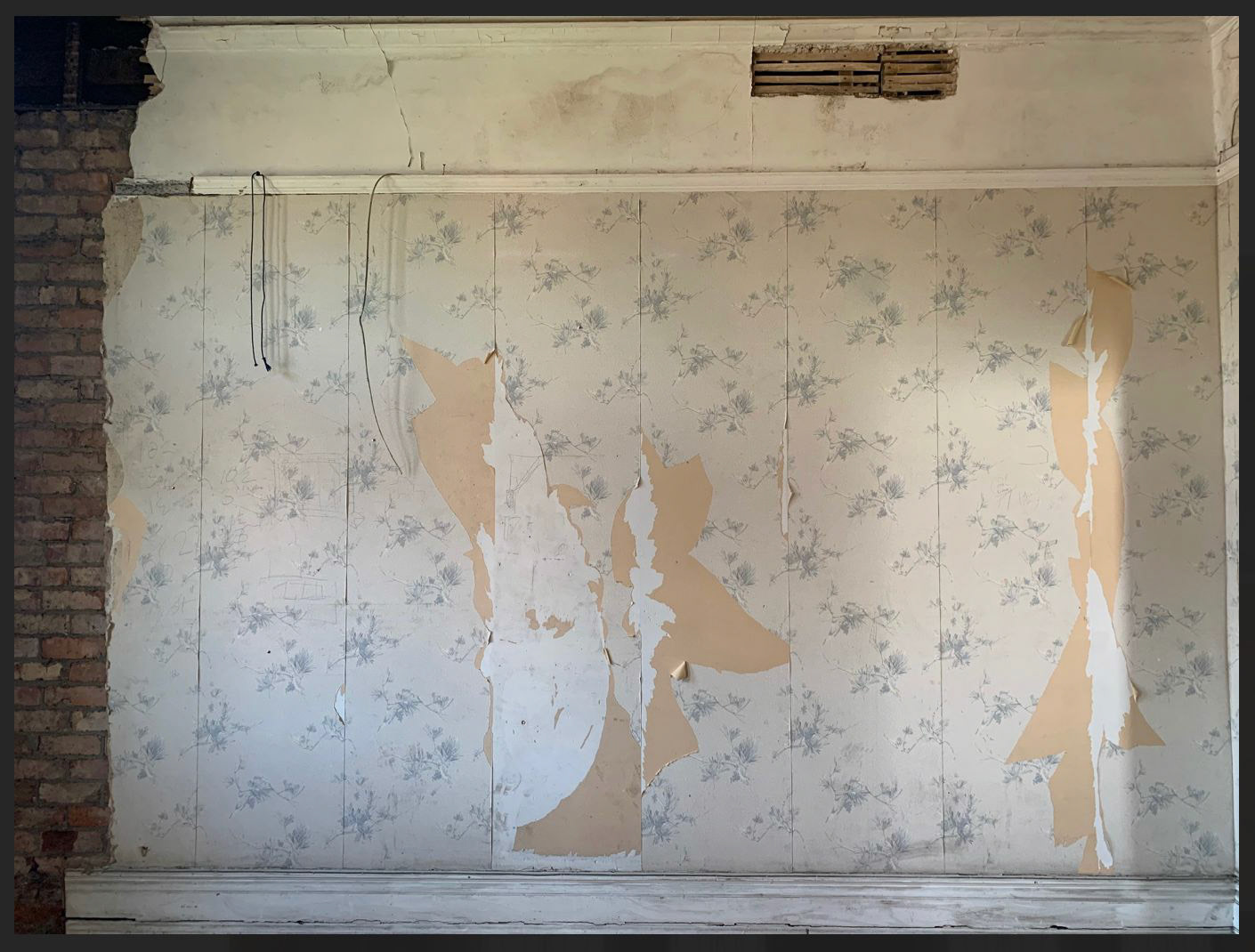

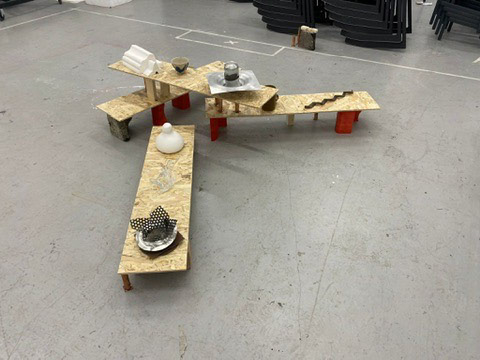
The beginning stages of set up
Mark and the members of the committee were all part of the set up for the exhibition. Each member of the committee would make 20 'legs' each, for the tables that we would present our work on. Mark selected his favourite few to go in the final curation of the space. To be involved with each stage of the process, and to know that we were apart of every part of the process was a great achievement for everyone.
Volunteering at Great Northern Contemporary Craft Fair
I was a volunteer at GNCCF this year, and was part of the set up team on the Wednesday before the fair. I was helping the makers set up their stalls for the exhibition, which gave me a great chance to talk to all the makers, both established and those who are just starting out, about their work.


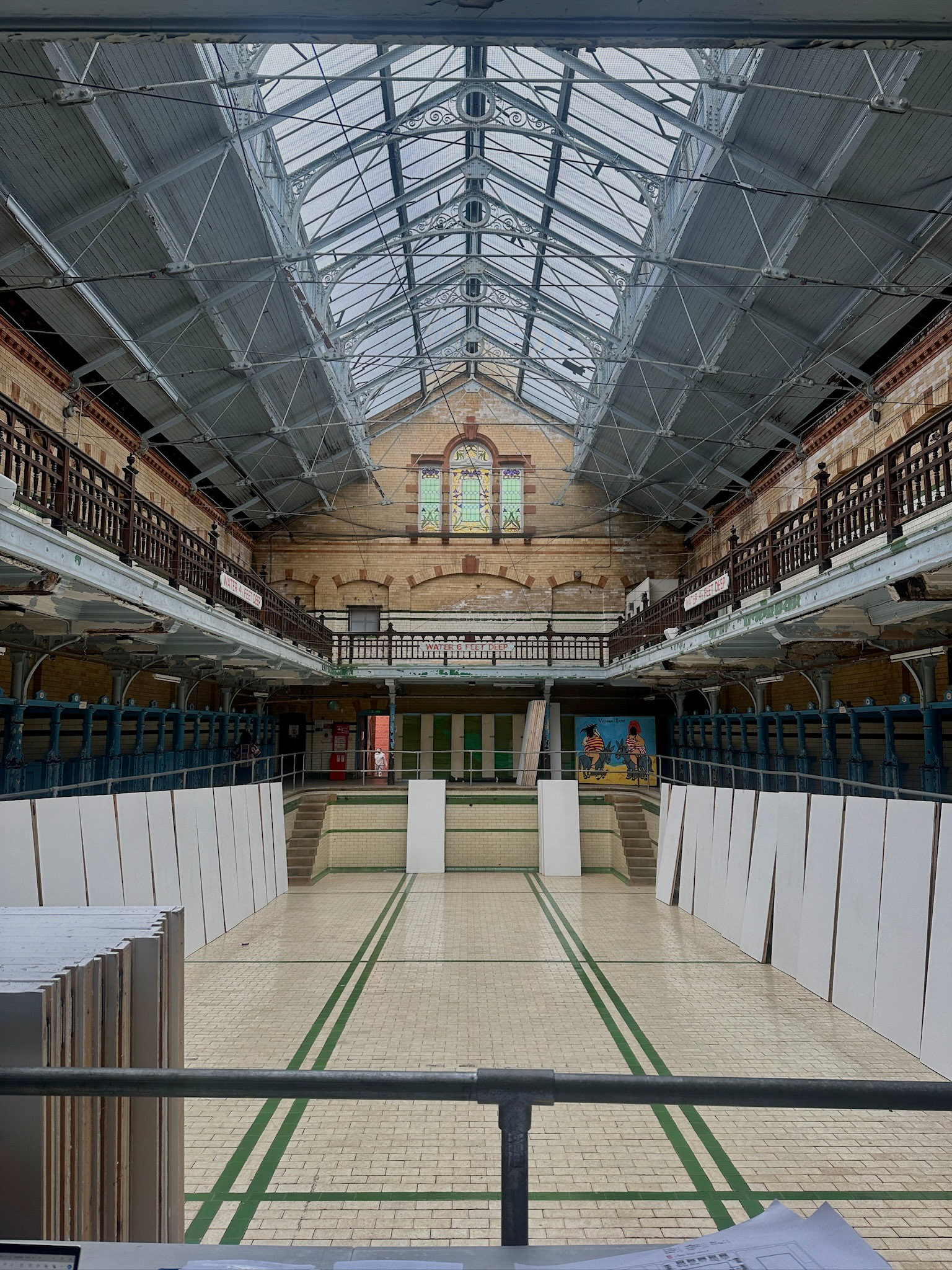
Getting inspired
The fair provided me with a lot of inspiration for my project. I was able to talk to lots of fellow makers, including graduates that were exhibiting with Green Grads, something which I am very interested in exploring more, and have plans to contact Barbara who runs Green Grads, to find out more information about this. I also talked to makers in Design Nation, which is a group of makers who all work with sustainable materials in order to run an effective creative design business.

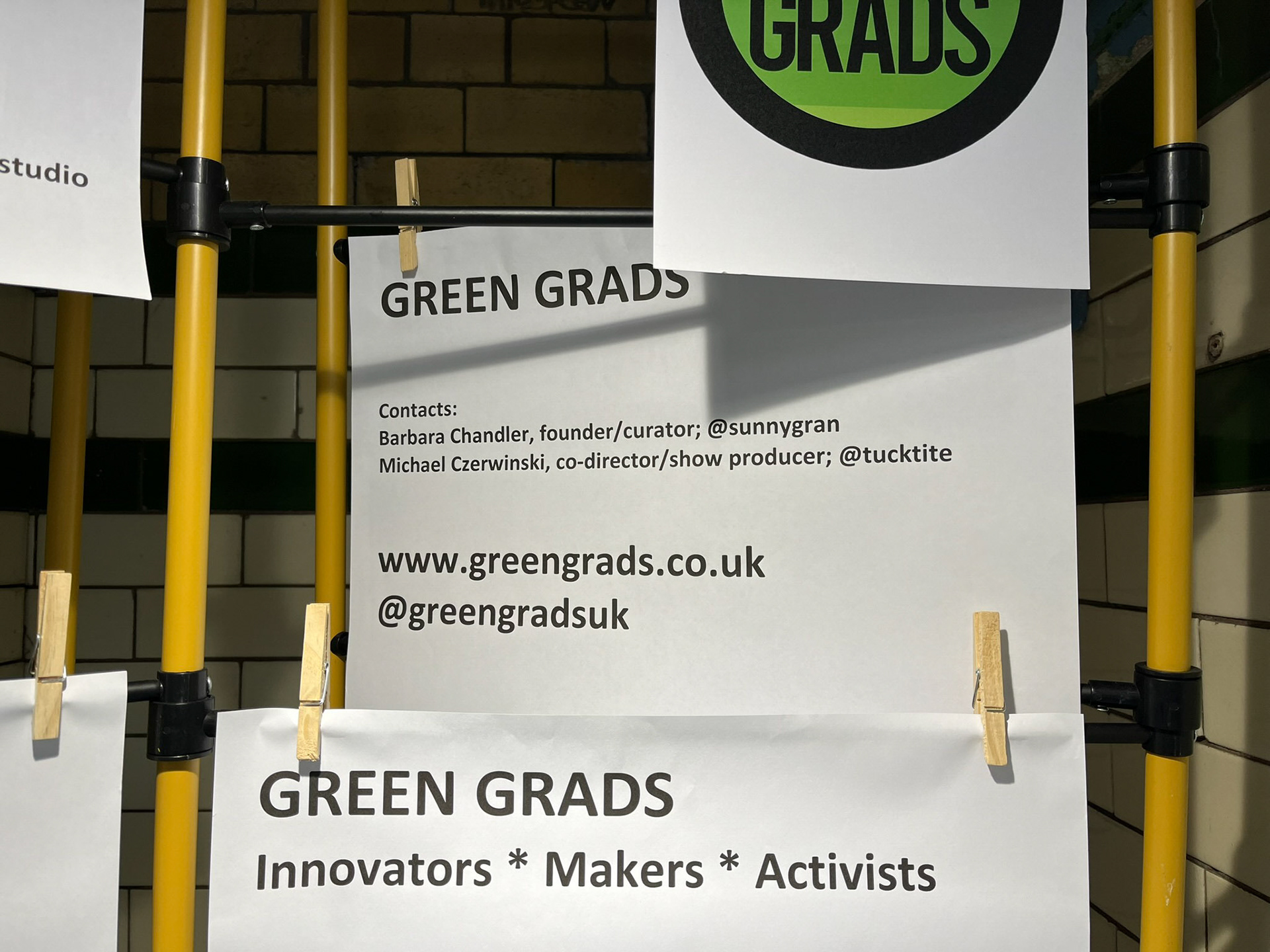
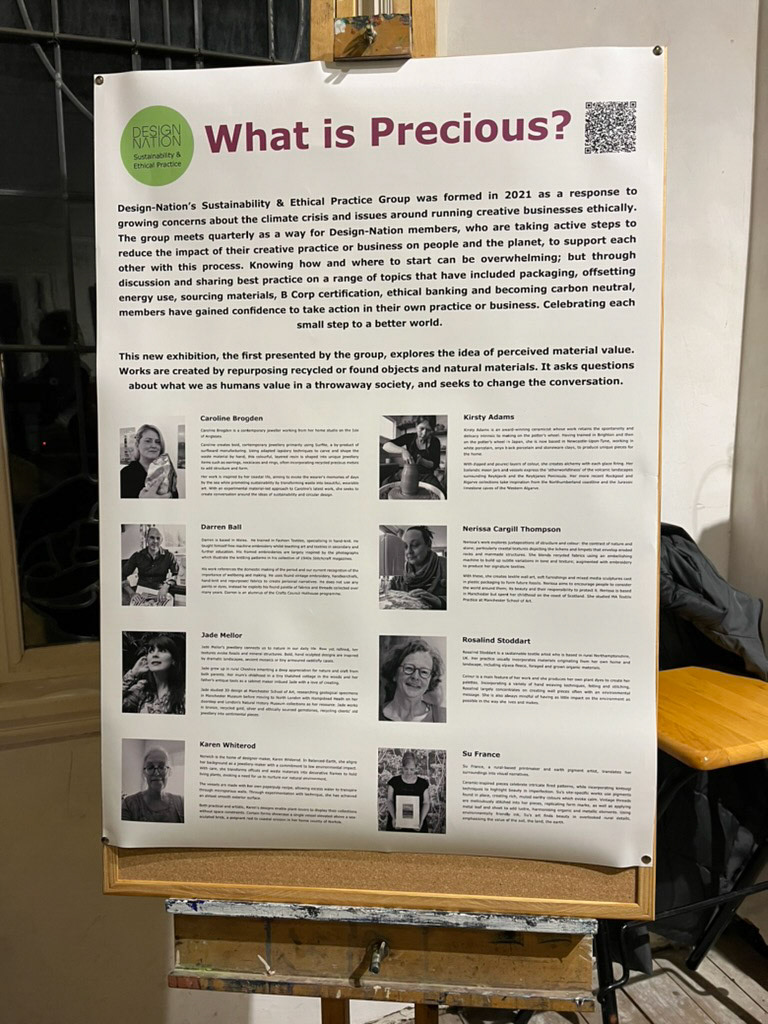

Photographs from GNCCF Its Got Legs exhibition, October 2024.
I really enjoyed being in our space for the week of Great Northern Contemporary Craft Fair, talking to visitors and fellow makers about all of our work. I was able to speak to lots of designers that were also exhibiting at the fair about their work, which was very inspirational for my practice, and got me thinking about how I want my practice to go.
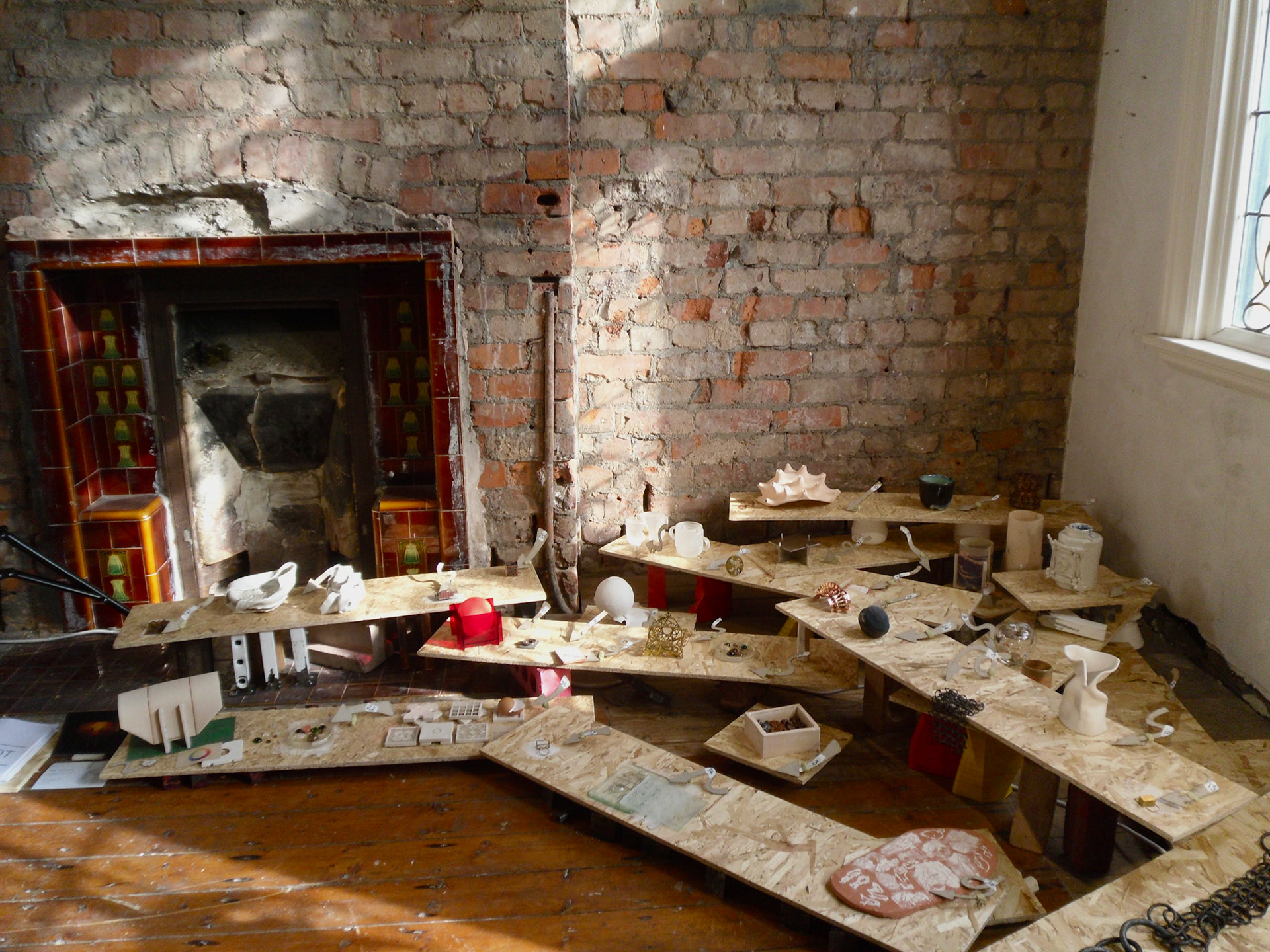

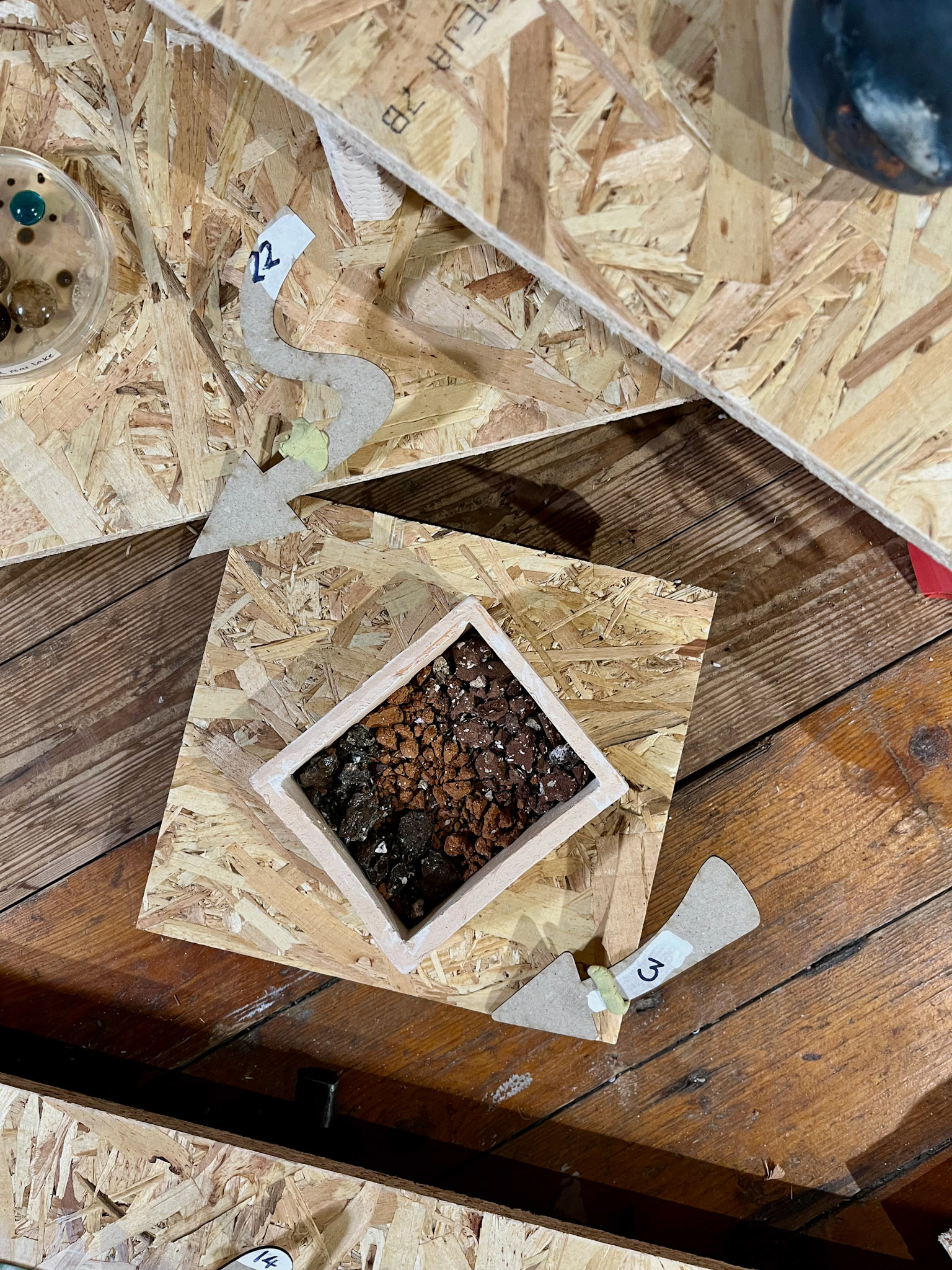
Venice Bienelle
In October, I went with Manchester School of Art on the Venice design study trip. We visited the Bienelle which was incredible to see so much art and design over one week. The whole week was full of art, inspiration and gathering knowledge about different mediums of art.

All photographs taken by myself.
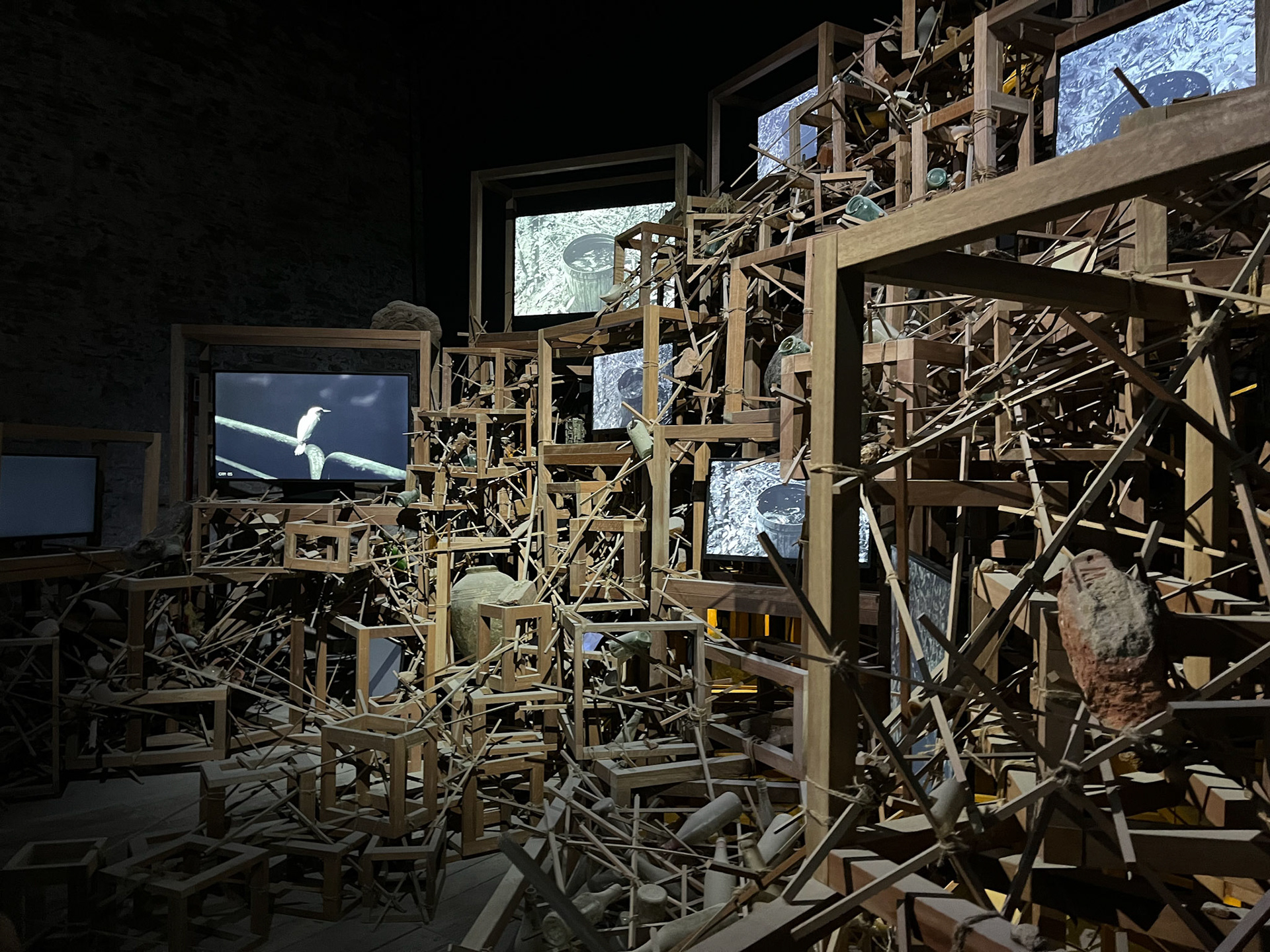

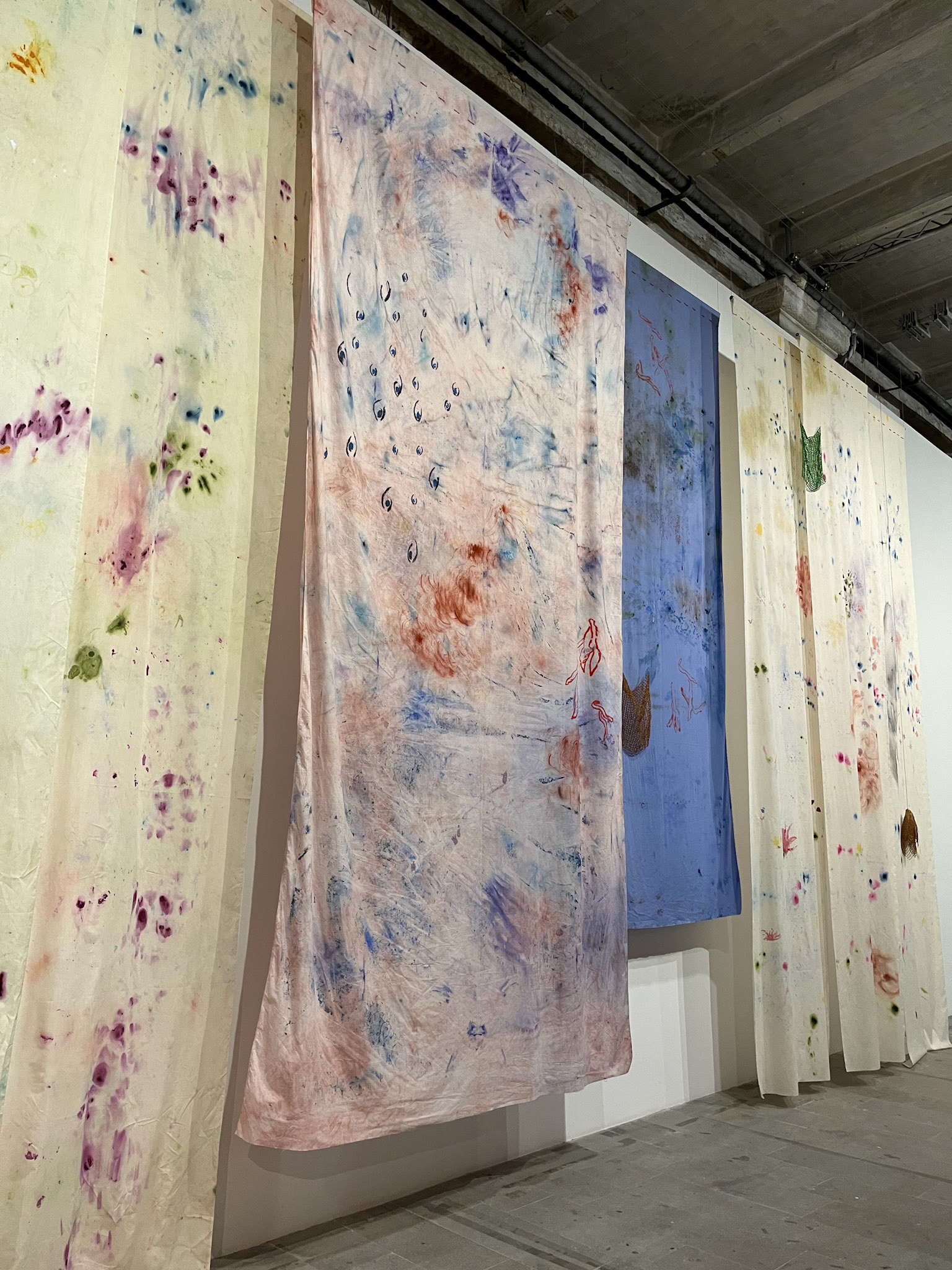
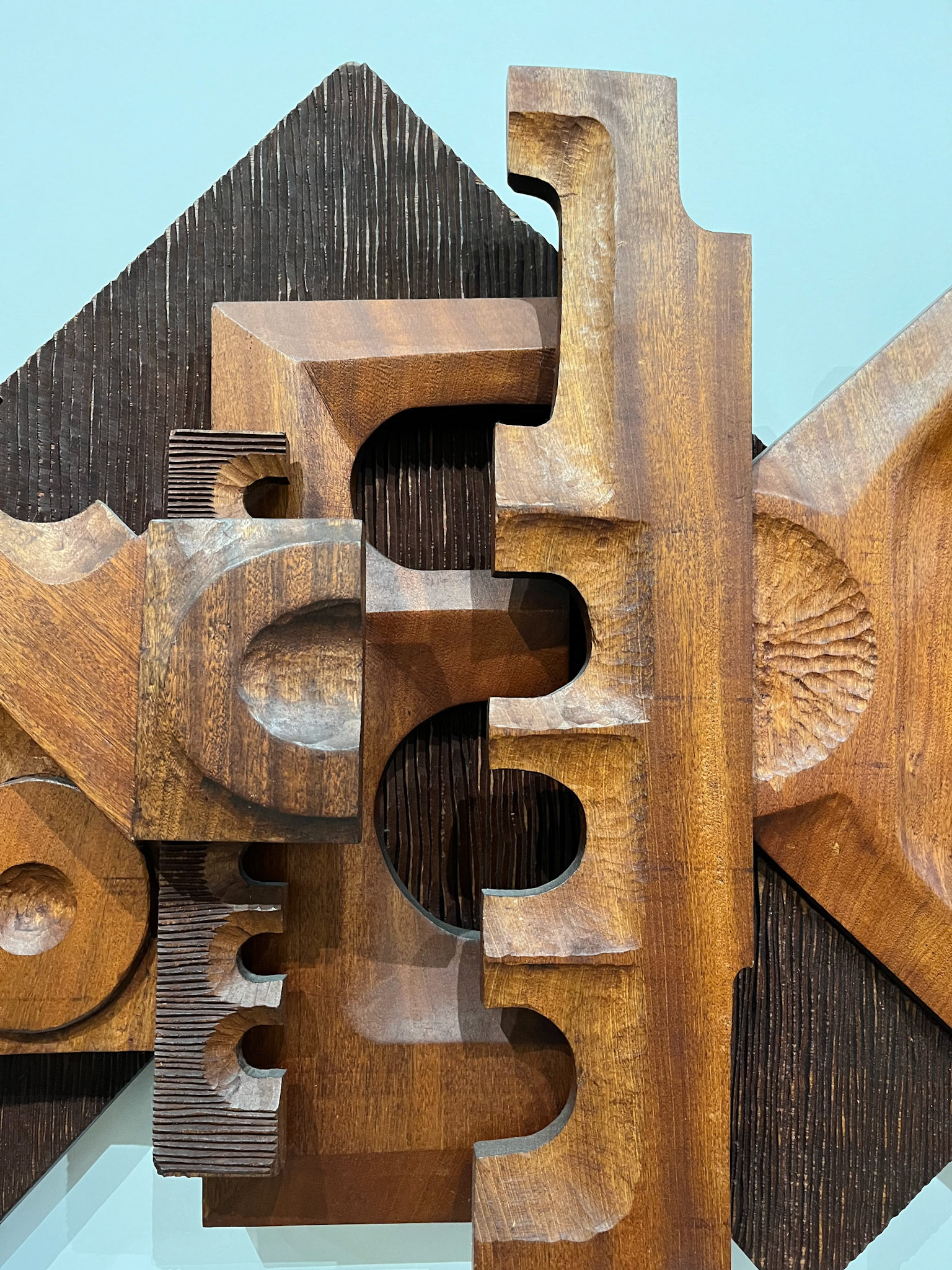

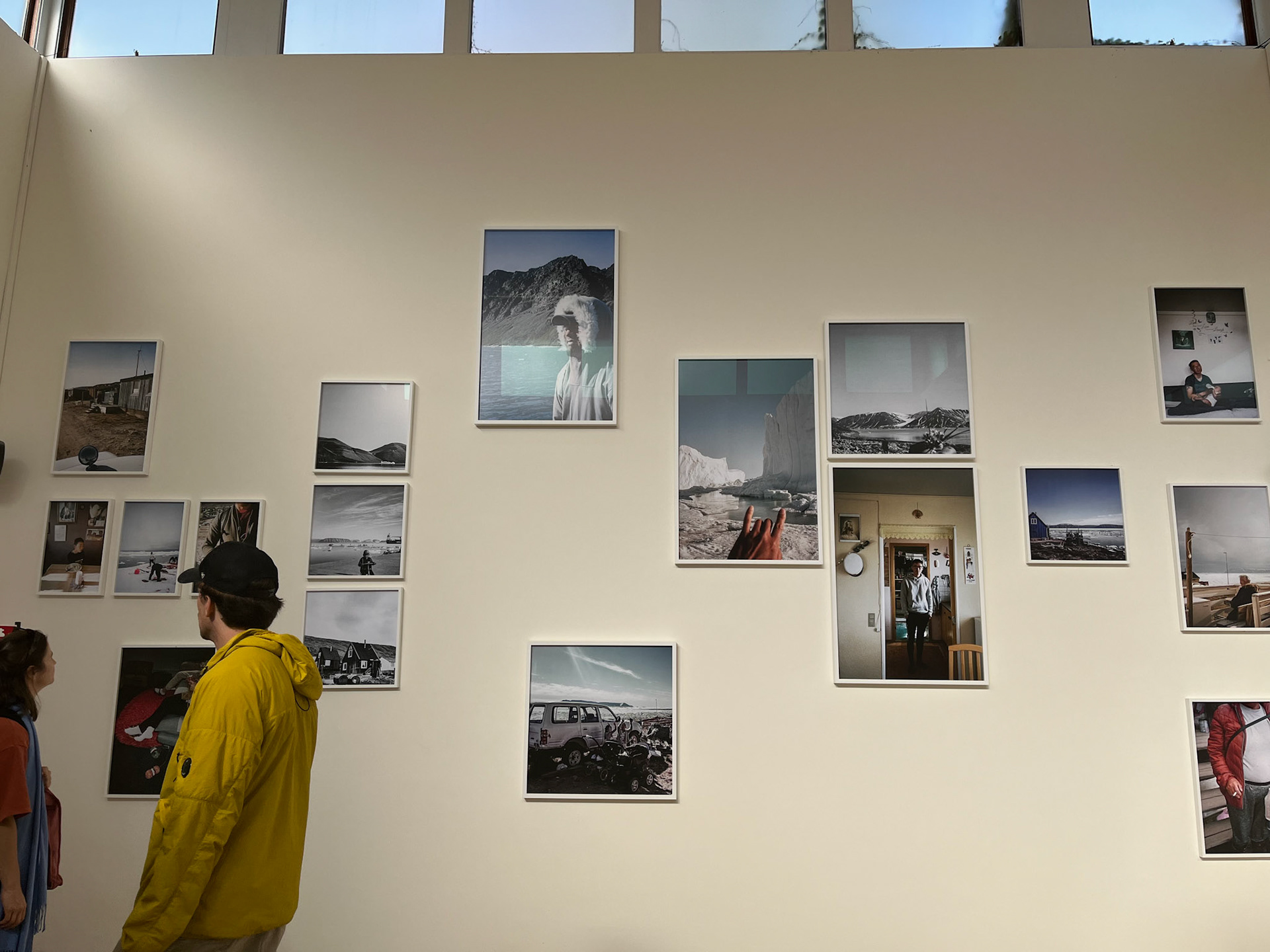


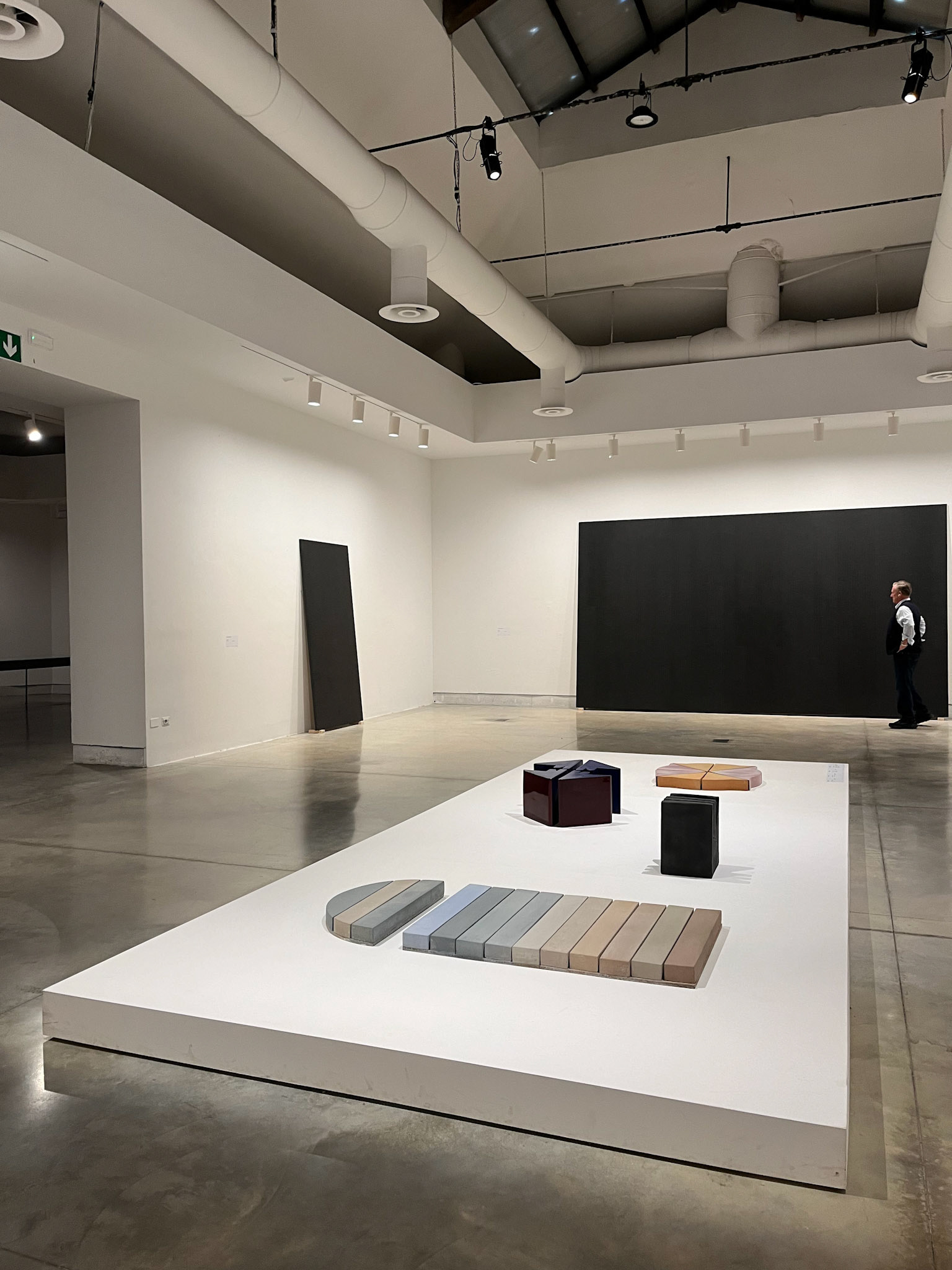
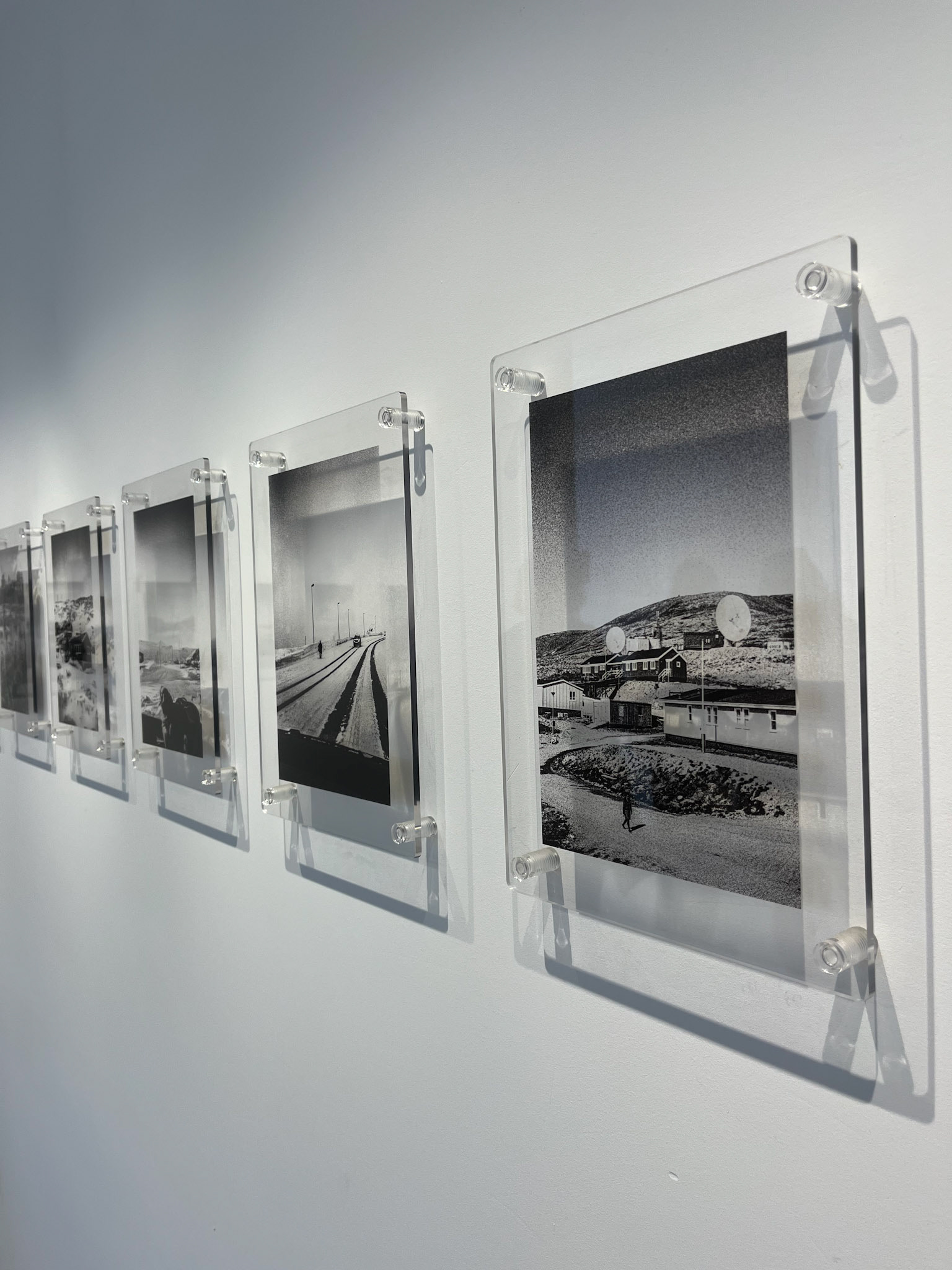
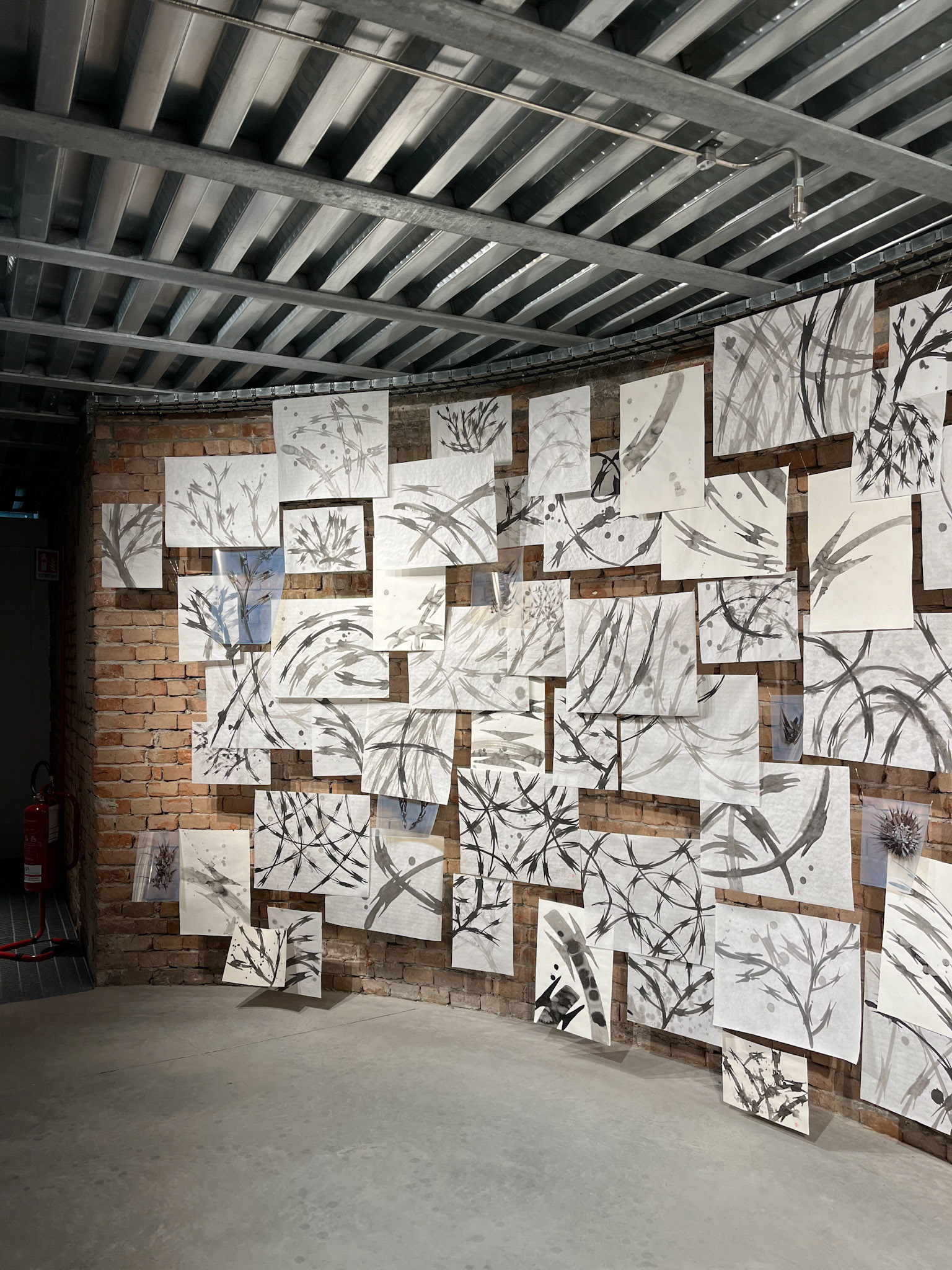
Terra (re) forma exhibition at PINK
I went to the opening evening at PINK in Stockport for the Terra (re) Forma exhibition. This is an artist collective formed at 7 Spot Pottery and is a collection of ceramic work from eleven artists. The title, Terra meaning land and earth and (Re) Forma meaning reconstructing the earth into sculptural forms. This was a great exhibition to visit as it showed a series of various ceramic works, all using different techniques and styles.
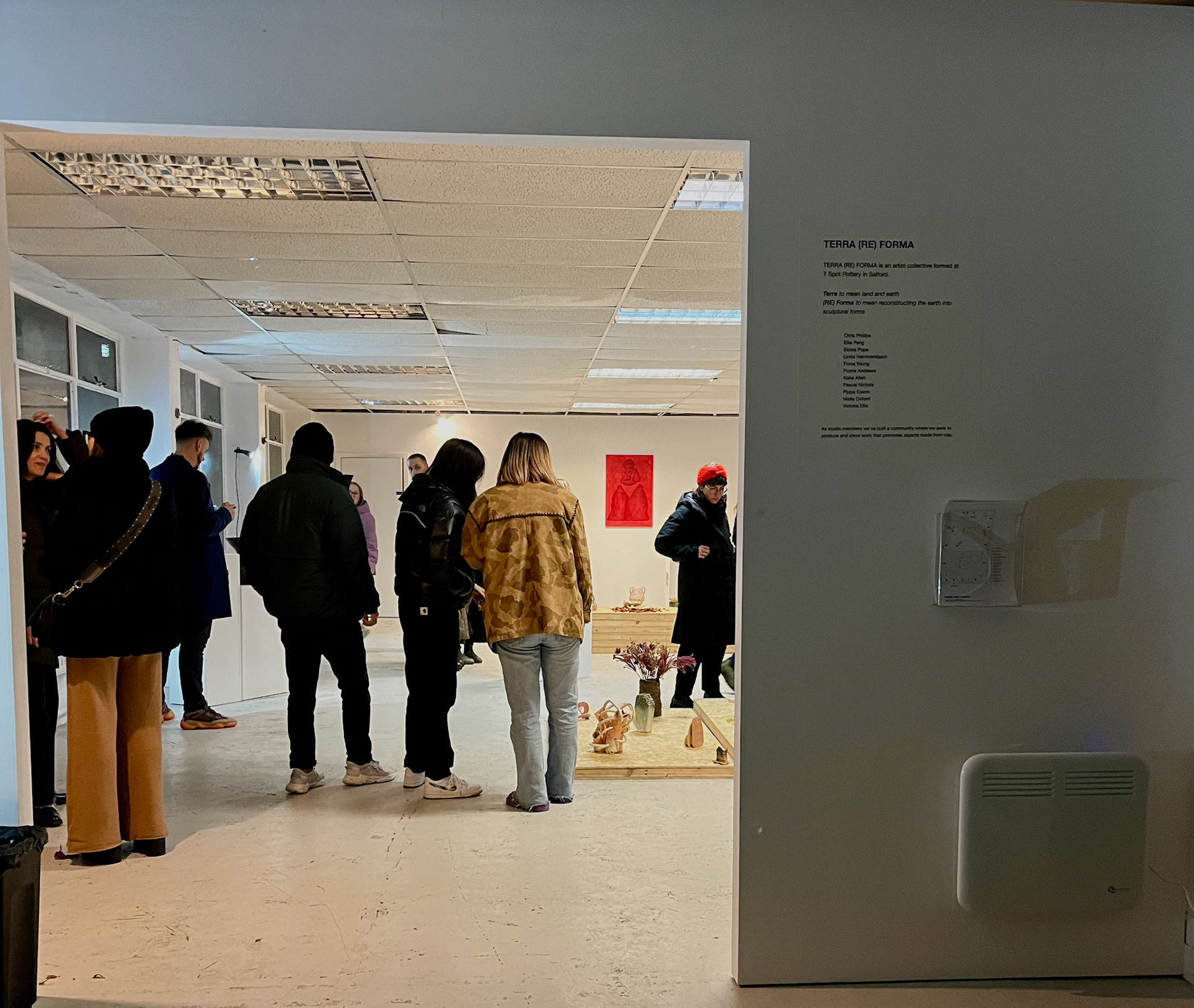
All photographs taken by myself.


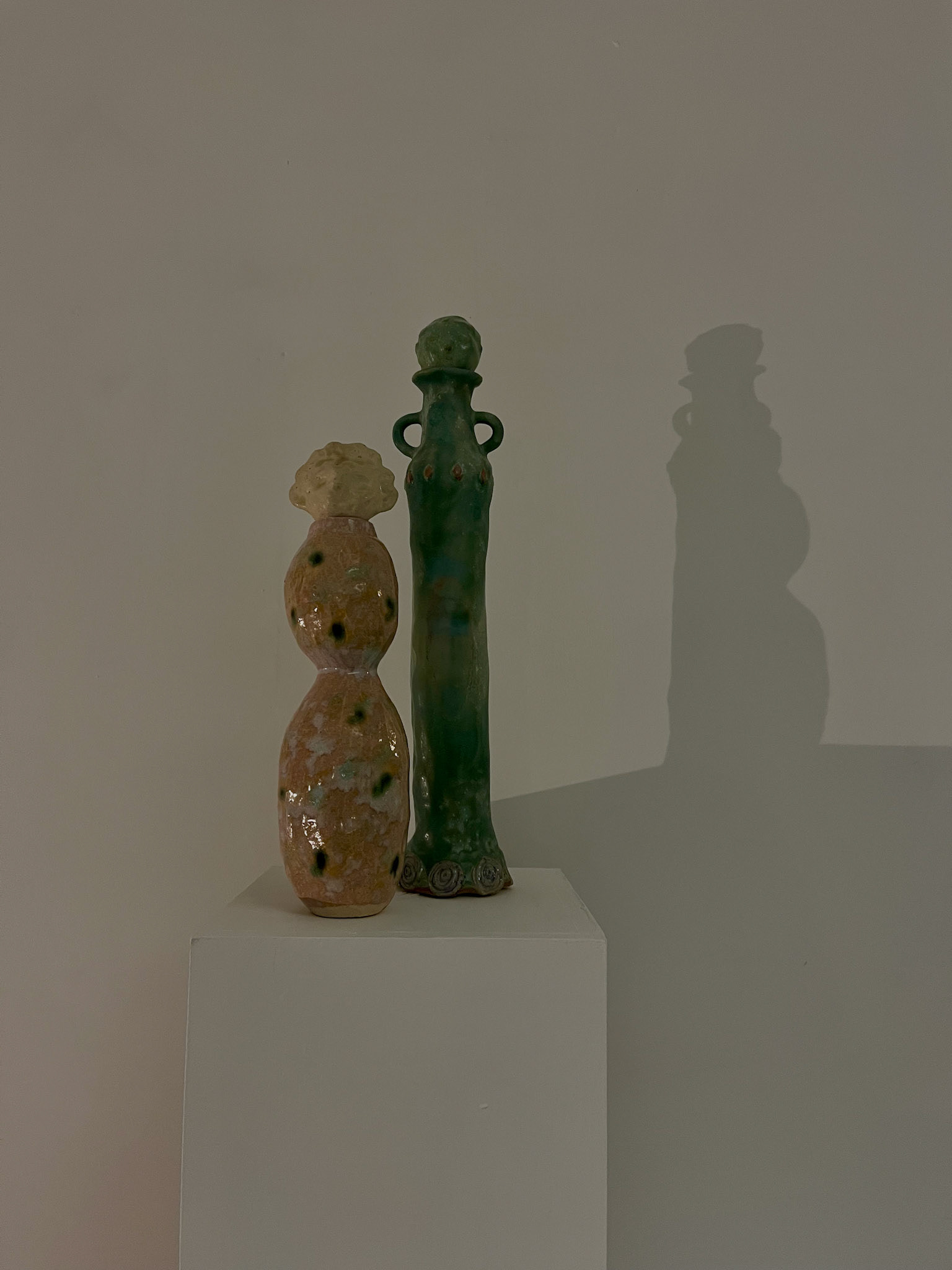
Talks
Throughout this unit, we have had many talks from staff about their practice, but also graduates including the curator Lillie Tew and Martha Wiles as part of the Alumni panel talks. I find talks very beneficial for me as a designer, and they support with thinking about life after graduation.
Lillie was a great person to talk to and gave me really insightful things to think about and look into, including residencies and tips on how to get my work out there to various audiences. From this conversation, I am starting to go to more open gallery evenings and starting more conversations with designers to get my work out in the world.
Martha's talk on life after graduation, alongside other design school graduates, was reassuring to me. I am still quite unsure what direction I would like to go in after I graduate, but this talk made me aware how wide my options can be.
artist research
A lot of my secondary research comes from discovering craftspeople who work similarly to me. Whether it be artists who work with wild clay or who use techniques that I am influenced by, each of the maker's works that I am looking into throughout this project has a passion for bringing the natural world into their practice.
Imprints of Earth
During my placement at Manchester Craft and Design Centre, I was able to talk to Imprints of Earth, a mother-daughter duo who have a studio and sell their work there. They are ceramicists who often use alternative firing methods for their ceramics. I was able to talk to them about their raku fired pieces, and also how they pit fire their ceramics. They told me that they were able to use a friend's farm to fire their pieces and that it is a long process but very worthwhile as it creates unique, organic outcomes. They also use horsehair and feathers to raku fire some pieces.
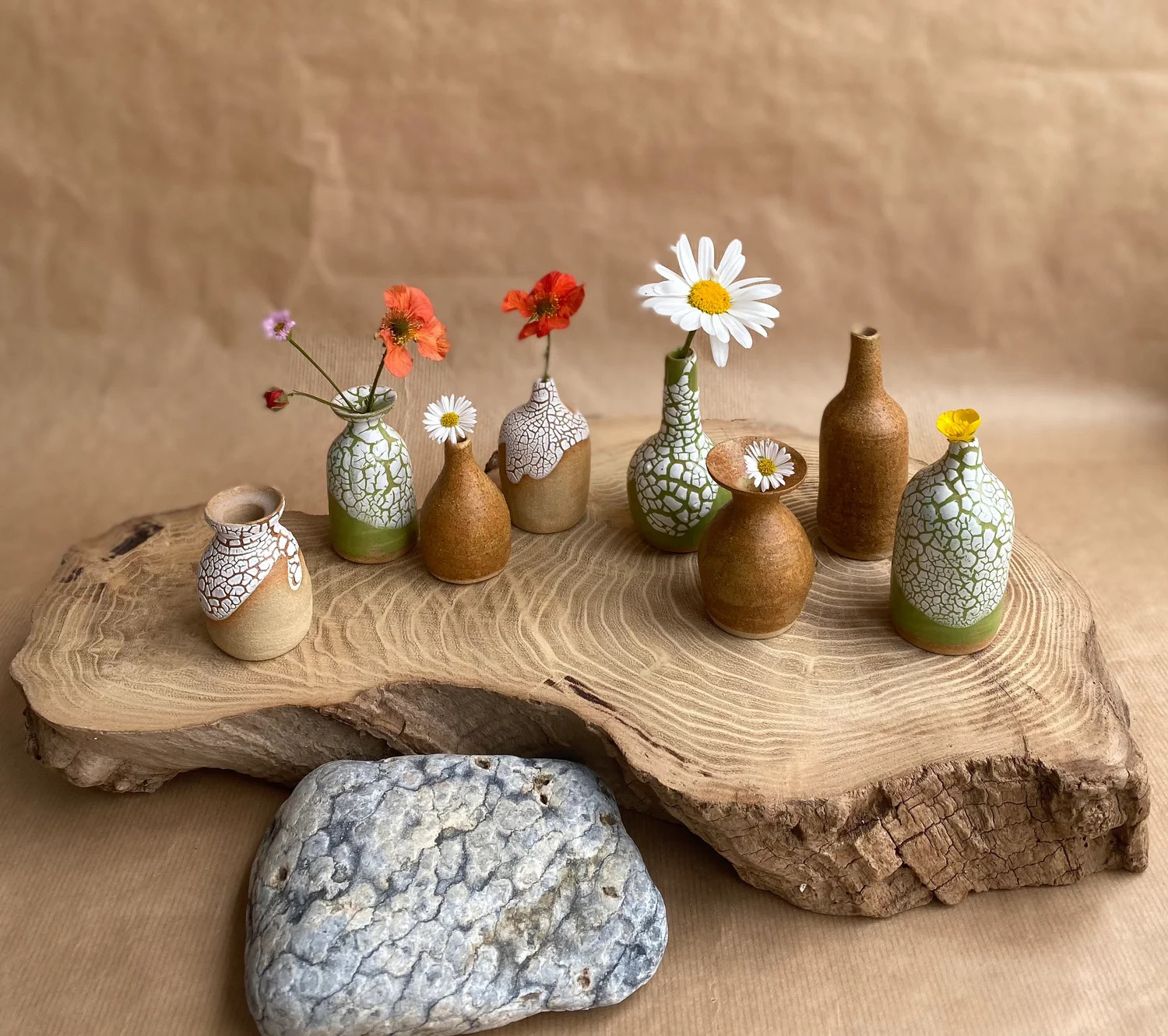
Photos sourced from https://imprintsofearth.com
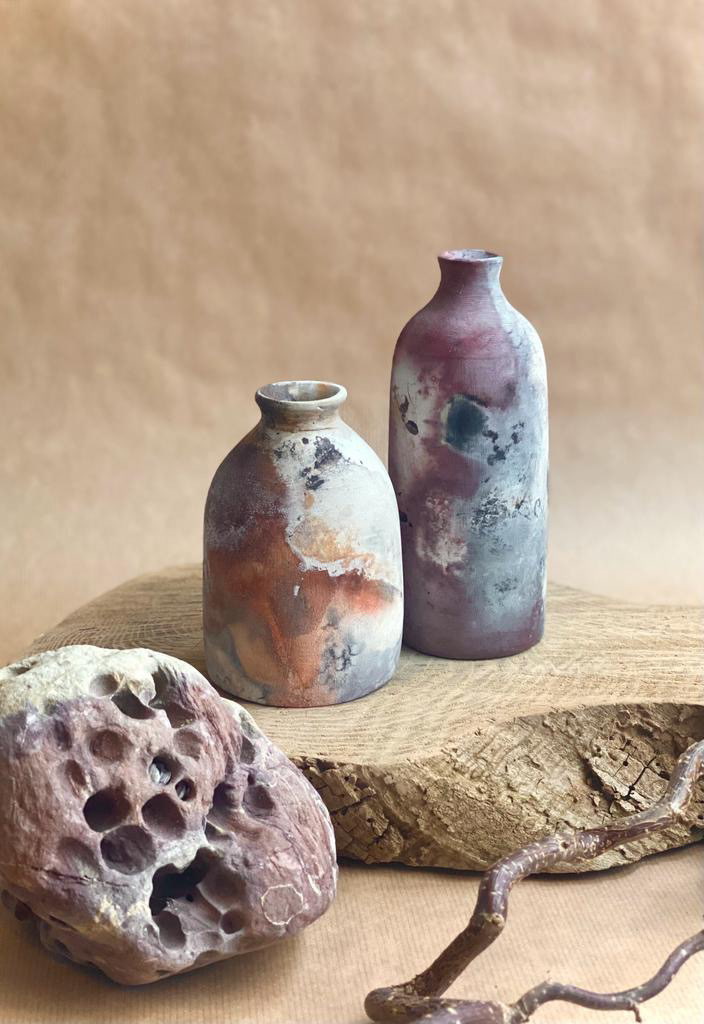
Photos sourced from https://imprintsofearth.com
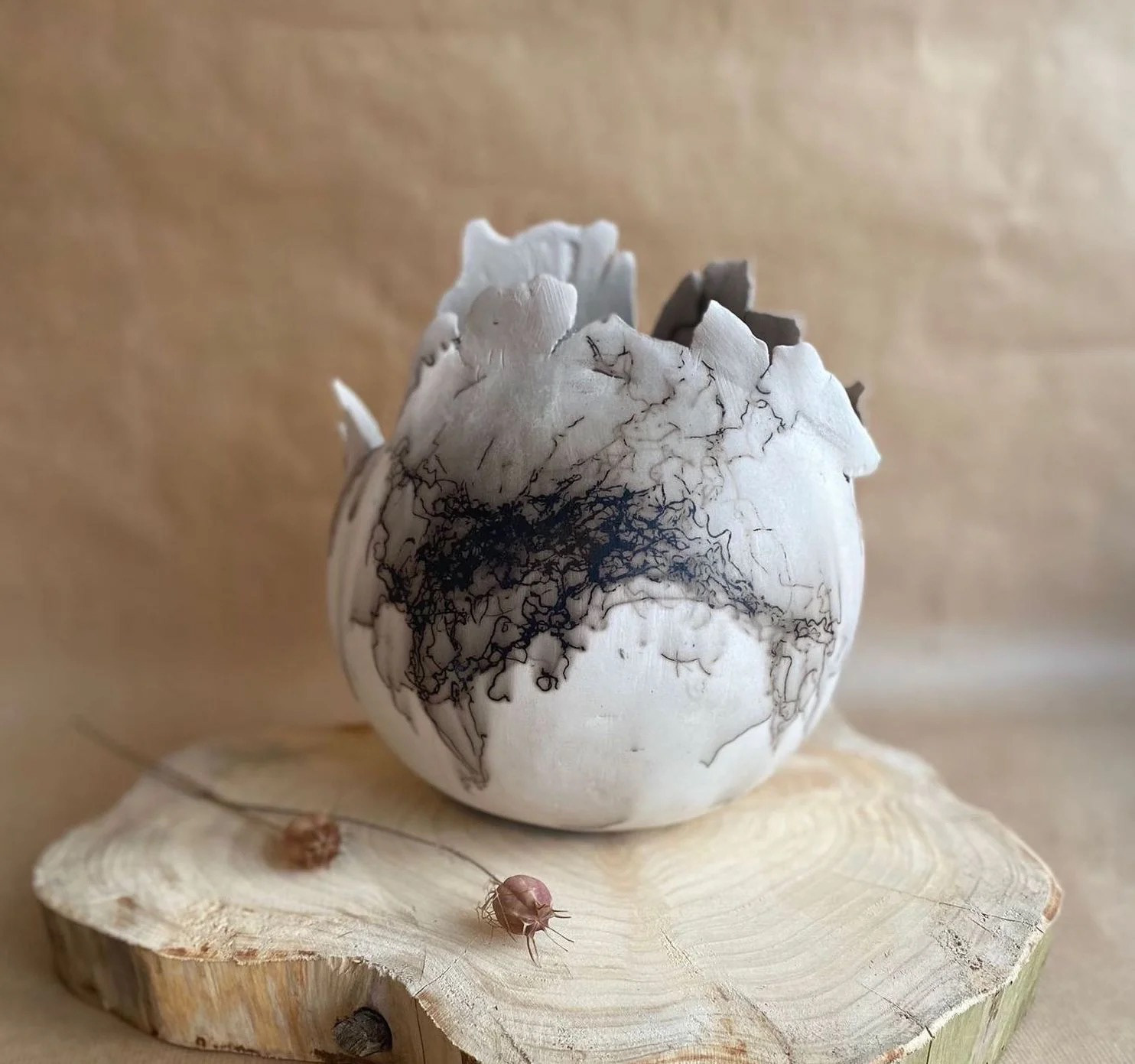
Photos sourced from https://imprintsofearth.com
Ground Workshops
Ground workshops are based in Stoke on Trent, and they work seasonally with artists who make with materials from the land.
Katrina Wilde graduated with a BA in Textiles in Practice at Manchester School of Art in 2016. Her practice is textile-based with a focus on local material research and community engagement through the language of colour. She currently works for The Portland Inn Project in Stoke-on-Trent, which is a community-led project offering workshops on sustainable design and living with the land in mind.
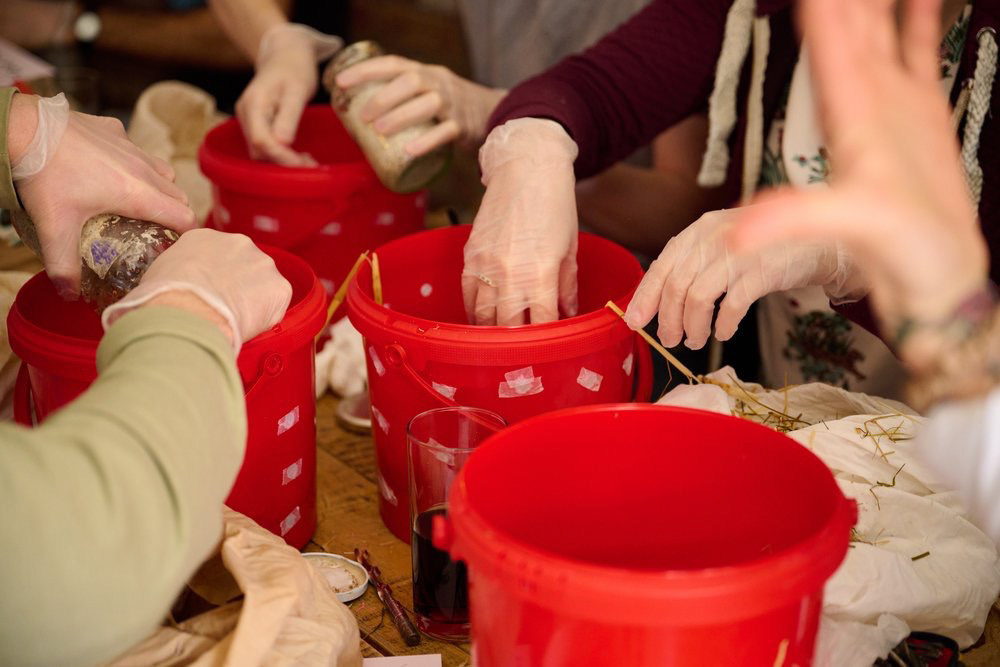
Ground Workshop, image sourced from artist webs

Ground Workshop, image sourced from artist webs
Gabriella Rhodes
Gabriella Rhodes is also a graduate from Manchester School of Art. She graduated in 2018 from Three Dimensional Design, so I am keen to get in touch with her due to being on the same course. Her practice focusses on working with wild clay and local materials, and since graduating has exhibited nationally and has led a number of clay based workshops.
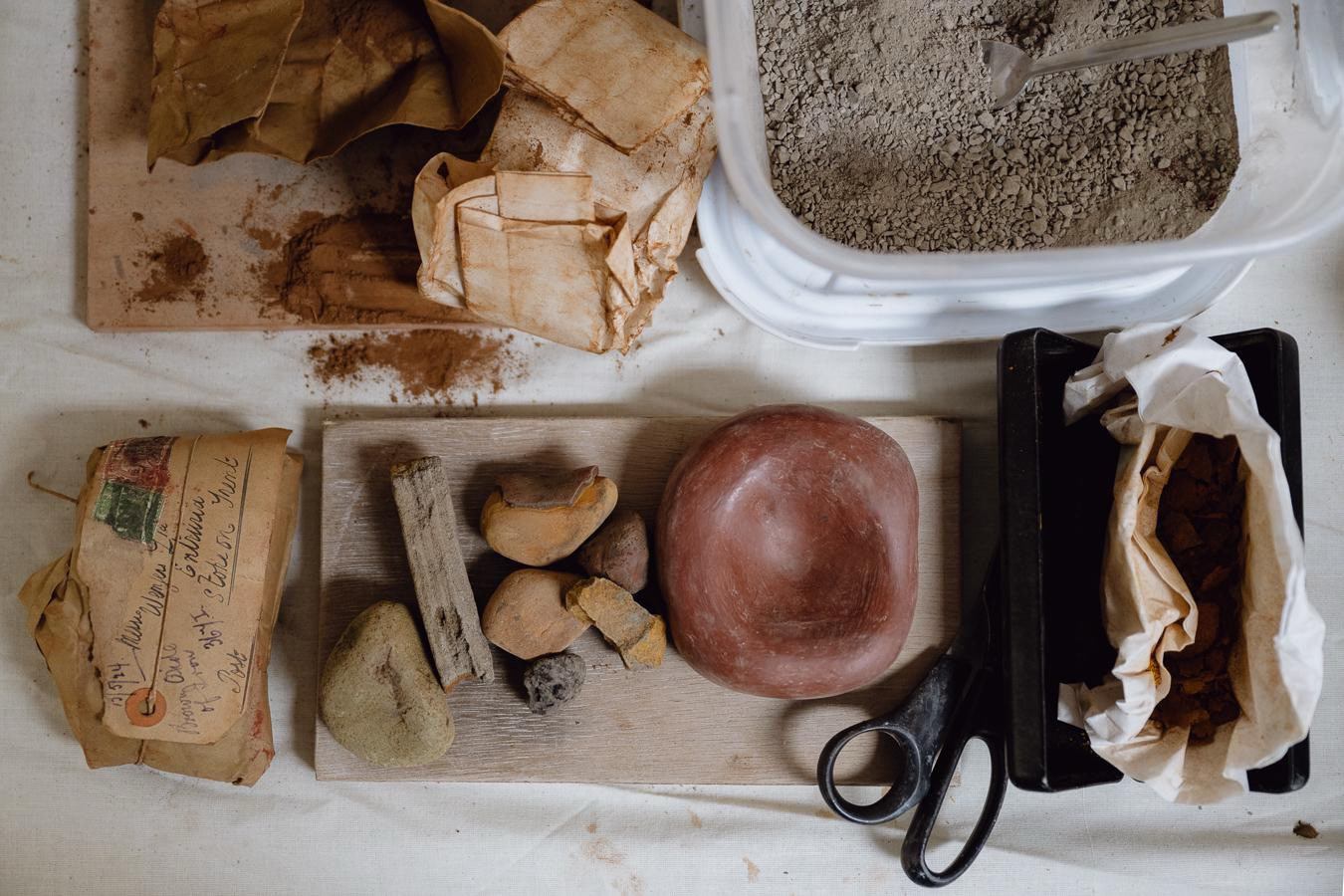
Sculptural Earth Bowl Workshop, 2023, Image sourced from Artists website
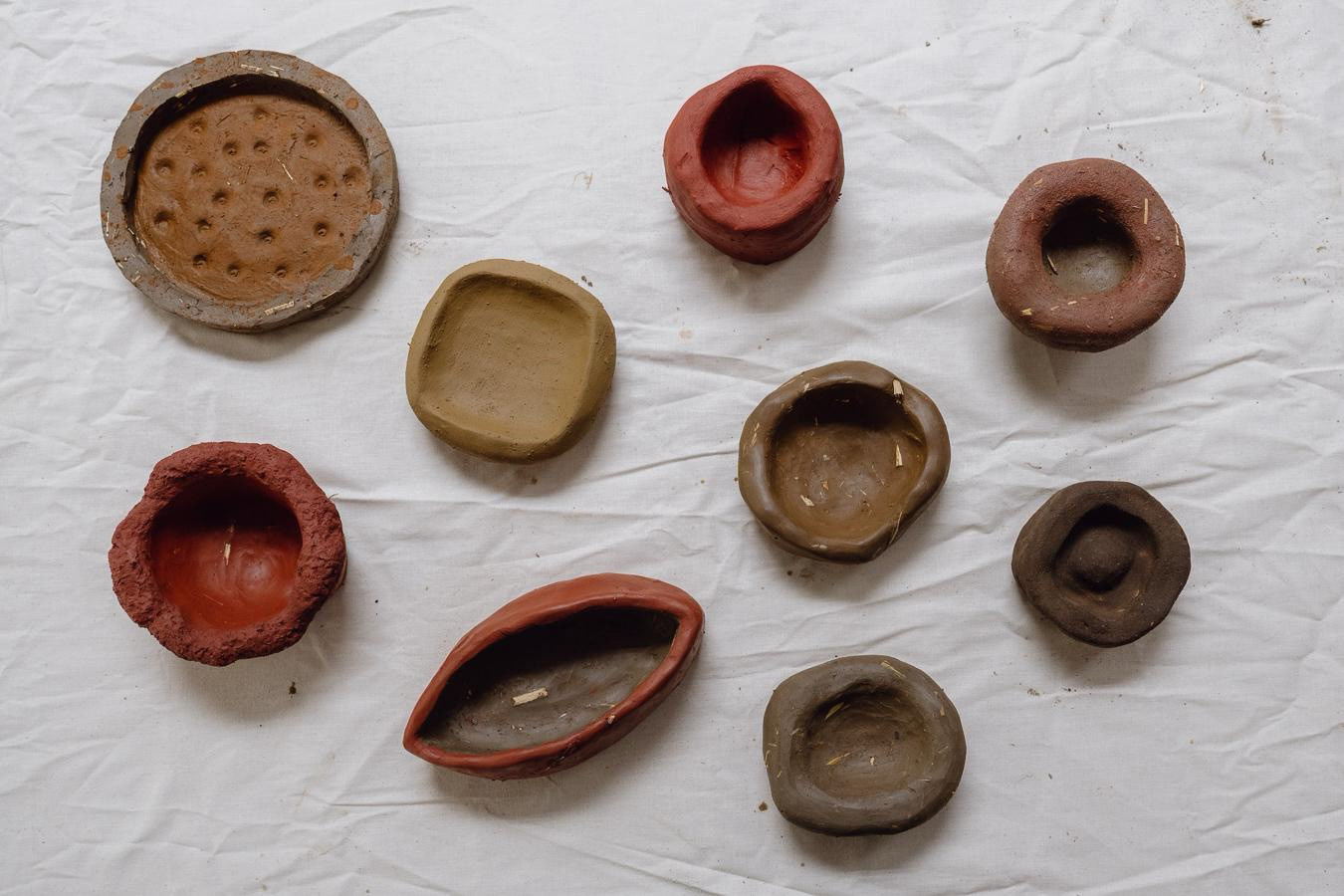
Sculptural Earth Bowl Workshop, 2023, Image sourced from Artists website
Edie Evans
Edie Evans describes herself as a Visual Artist who explores the "intersection of ecology, neurodiversity, and materiality, with a focus on clay." She uses found objects, gathered materials and natural processes to create a body of work which is rooted in the art of walking and exploring local land. Edie Evans has also just released that she will be running online workshops in the Spring about wild clay. She posted on her instagram that these will be affordable, accessible workshops for people to learn more about wild clay. The fact that these workshops will be online is interesting to me as I am unsure how learning about processes and techniques of working with wild clay will come across through an online workshop.
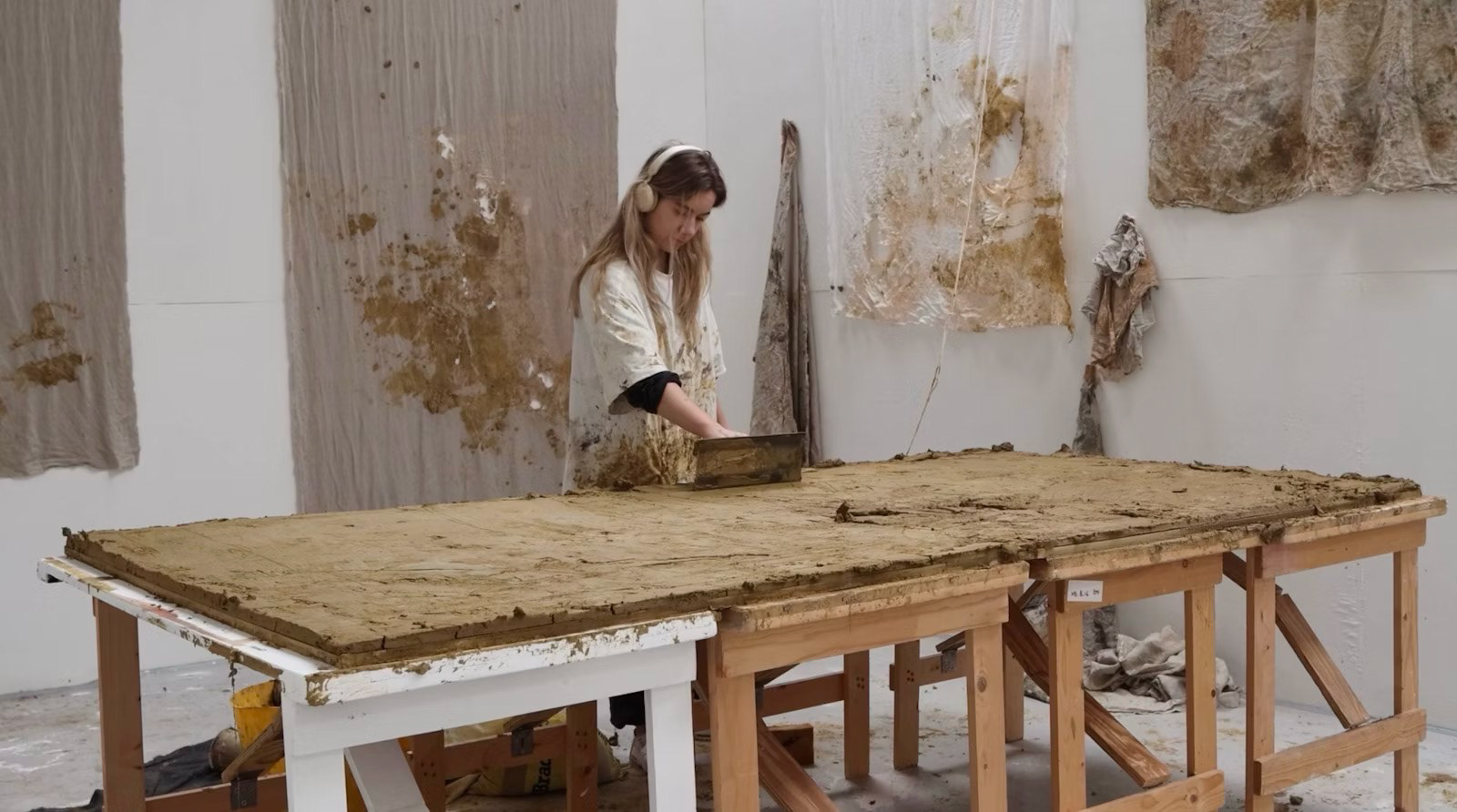
Images sourced from Freelands Foundation, 2024
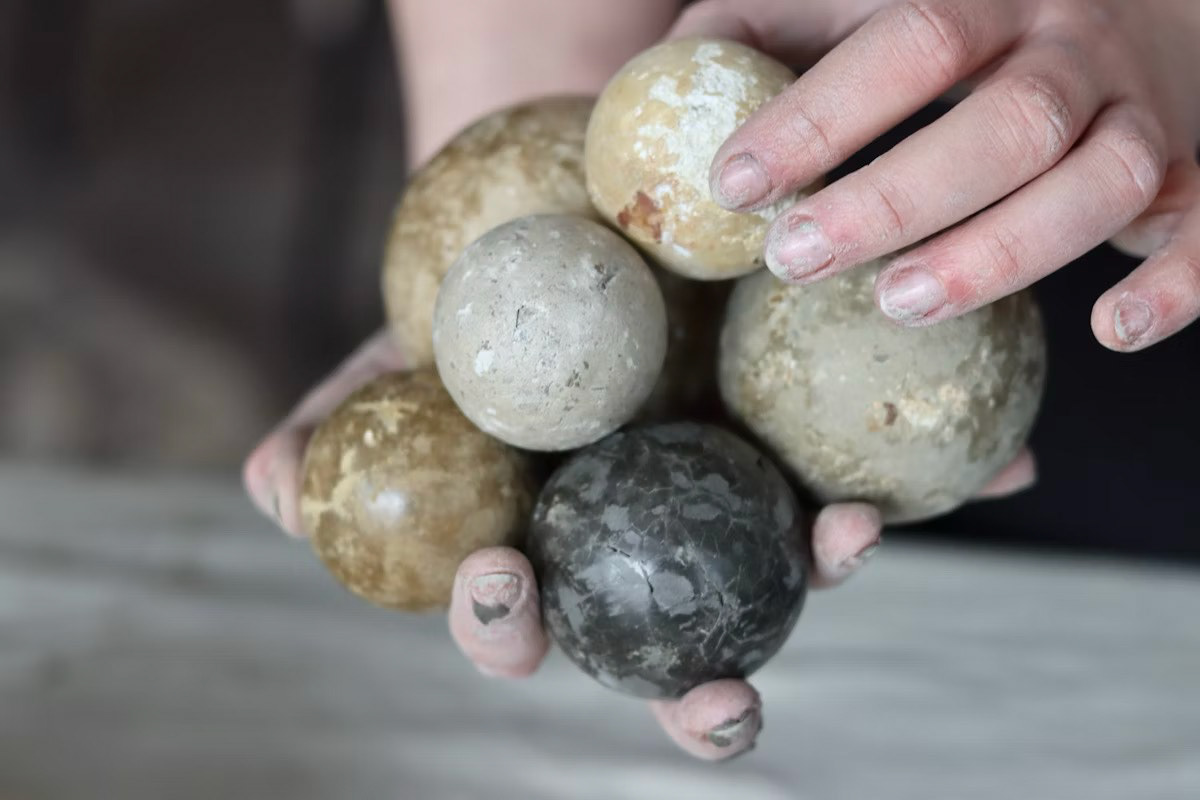
Earth Notes, 2023
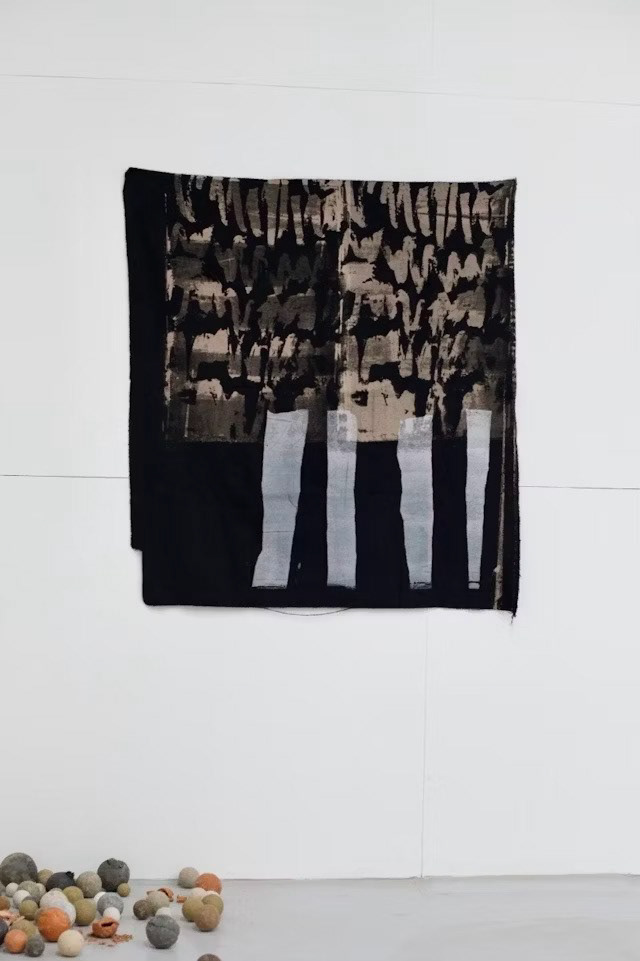
Landmarks, Textiles and Clay, 2023
Alison Cooke
Alison Cooke is a ceramist based in London who works with wild clay "unearthed" from geological and historical sites, during mining and engineering processes and also from scientific research. She is interested in uncovering the layers below a location site, discovering hidden networks and relating them to history.
I am particularly interested in her project Tin Mine Clay 2019. This is a ceramic exhibition of dug clay from two Penwith mines in Cornwall. She is looking into Cornwalls mining heritage and the geology of the place. The clay that Cooke uses is clay that has been kept in its natural state, with only the stones and debris being removed.
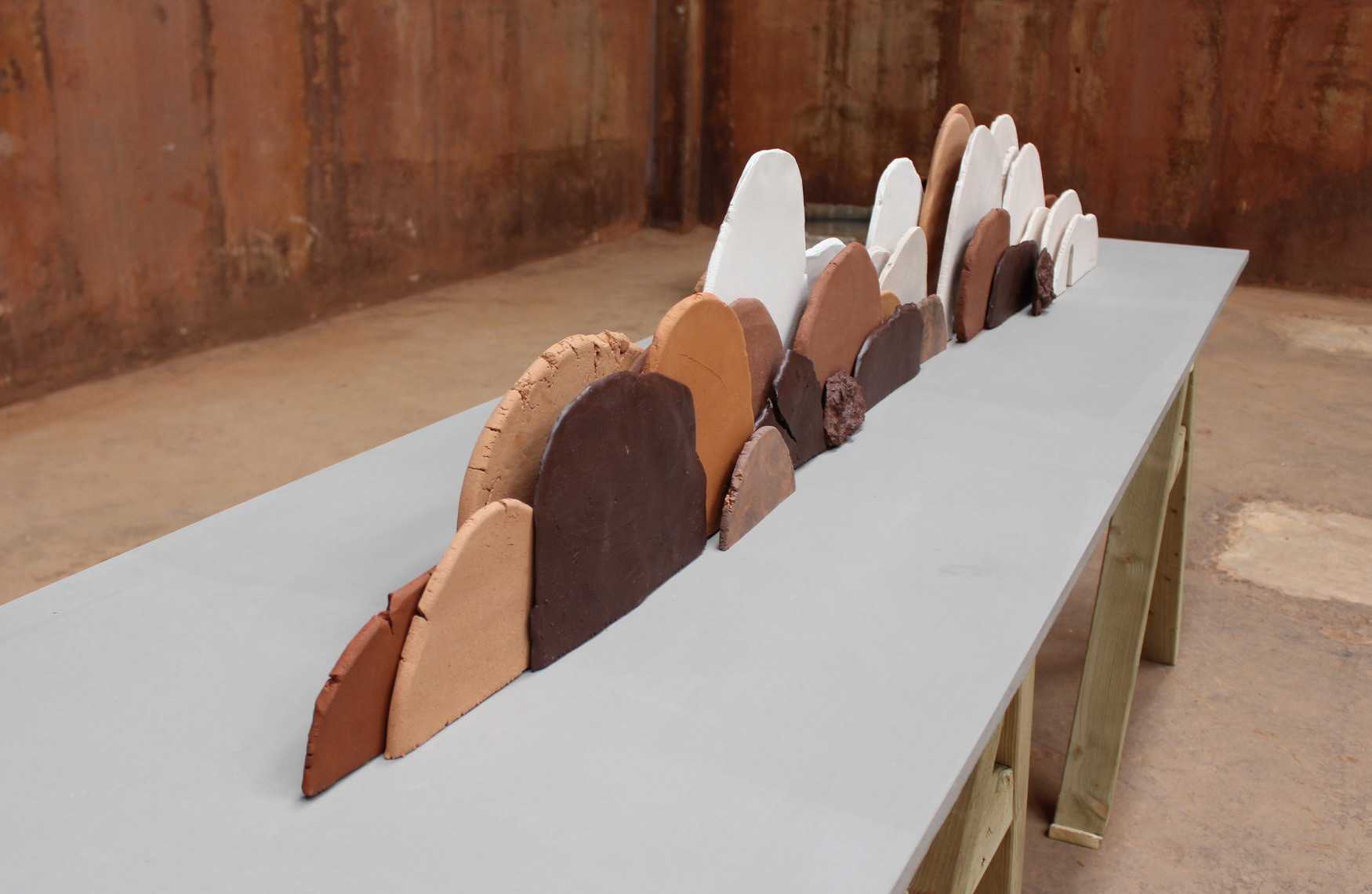
Photographs by Adam Sharpe from Rosevale Mine. Sourced from https://www.alisoncooke.co.uk/Tin-Mine-Clay
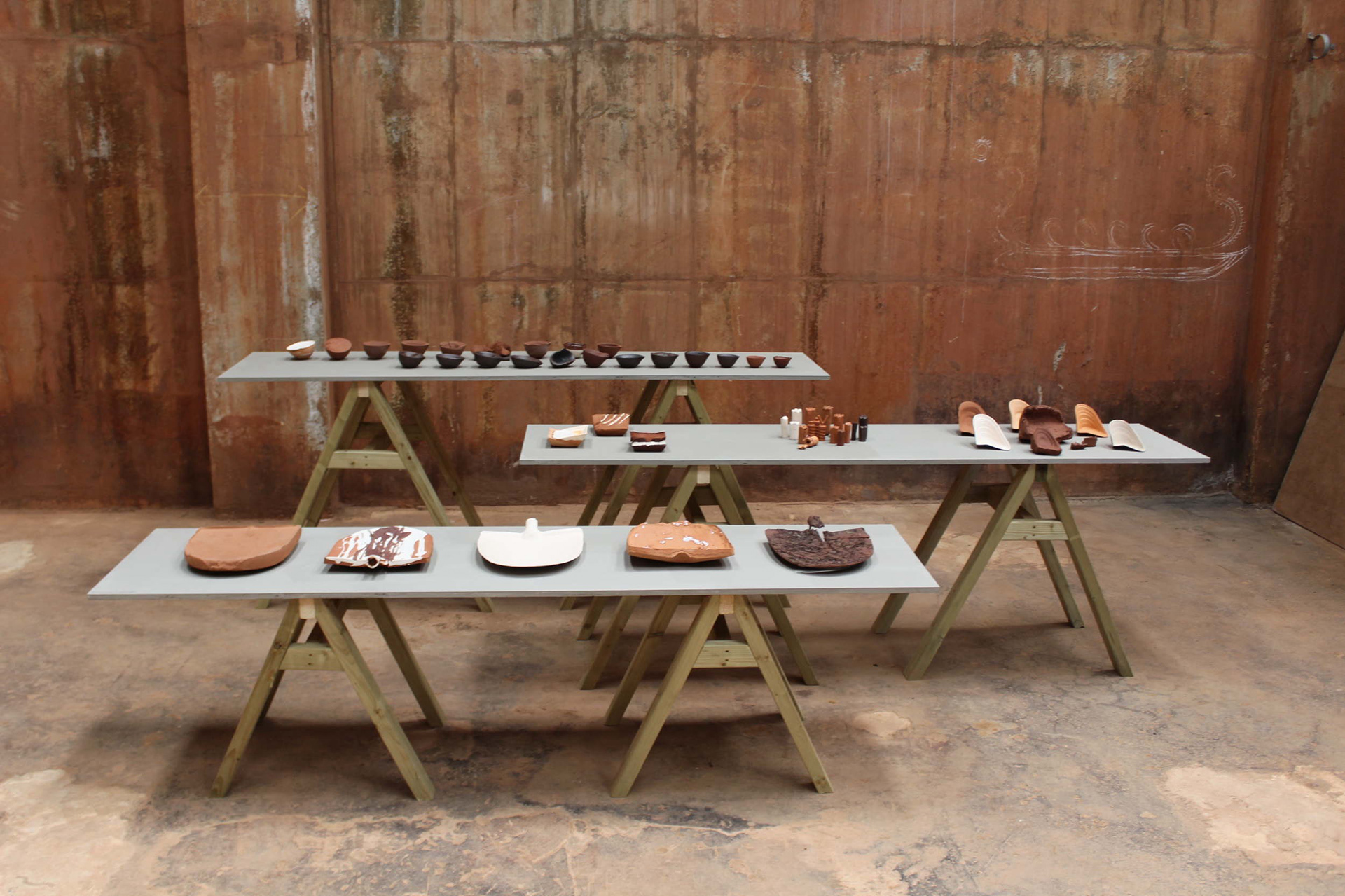


Matthew Blakely
Matthew Blakely is a ceramist who has written a guide about creating natural glazes from collected rocks, clays and ashes. He is interested in the geology of clay, and uses pottery to represent humans relationships and dependencies of the earth. He creates pots entirely made up of rocks and minerals from the land in individual locations around Britain. From keeping all the impurities, the process is full of unpredictability, and highlights the character of the places which the material is collected from.
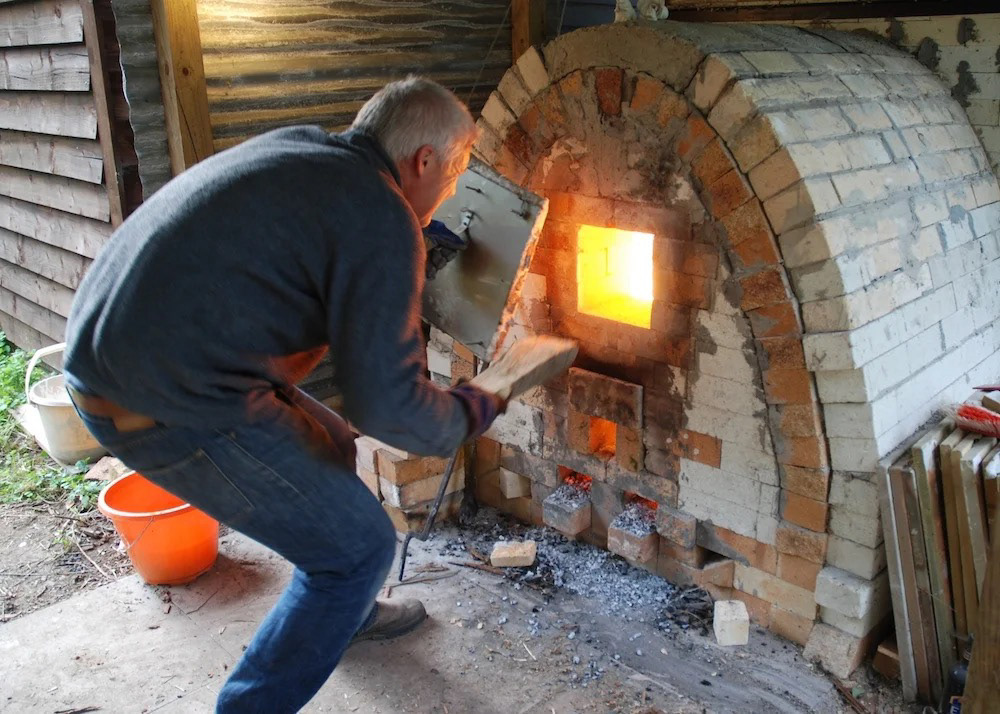
Image credit Matthew Blakely
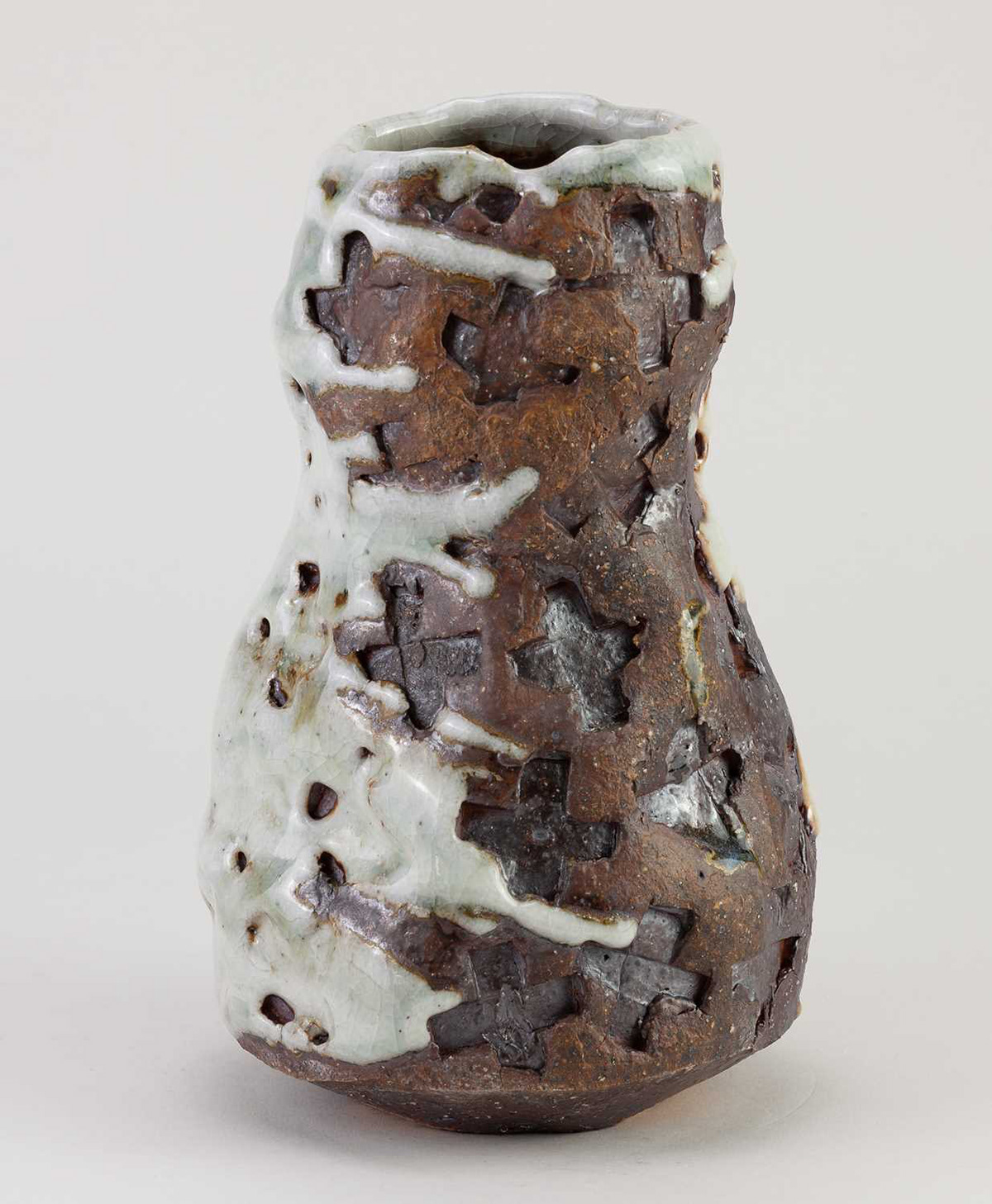
Image credit Matthew Blakely
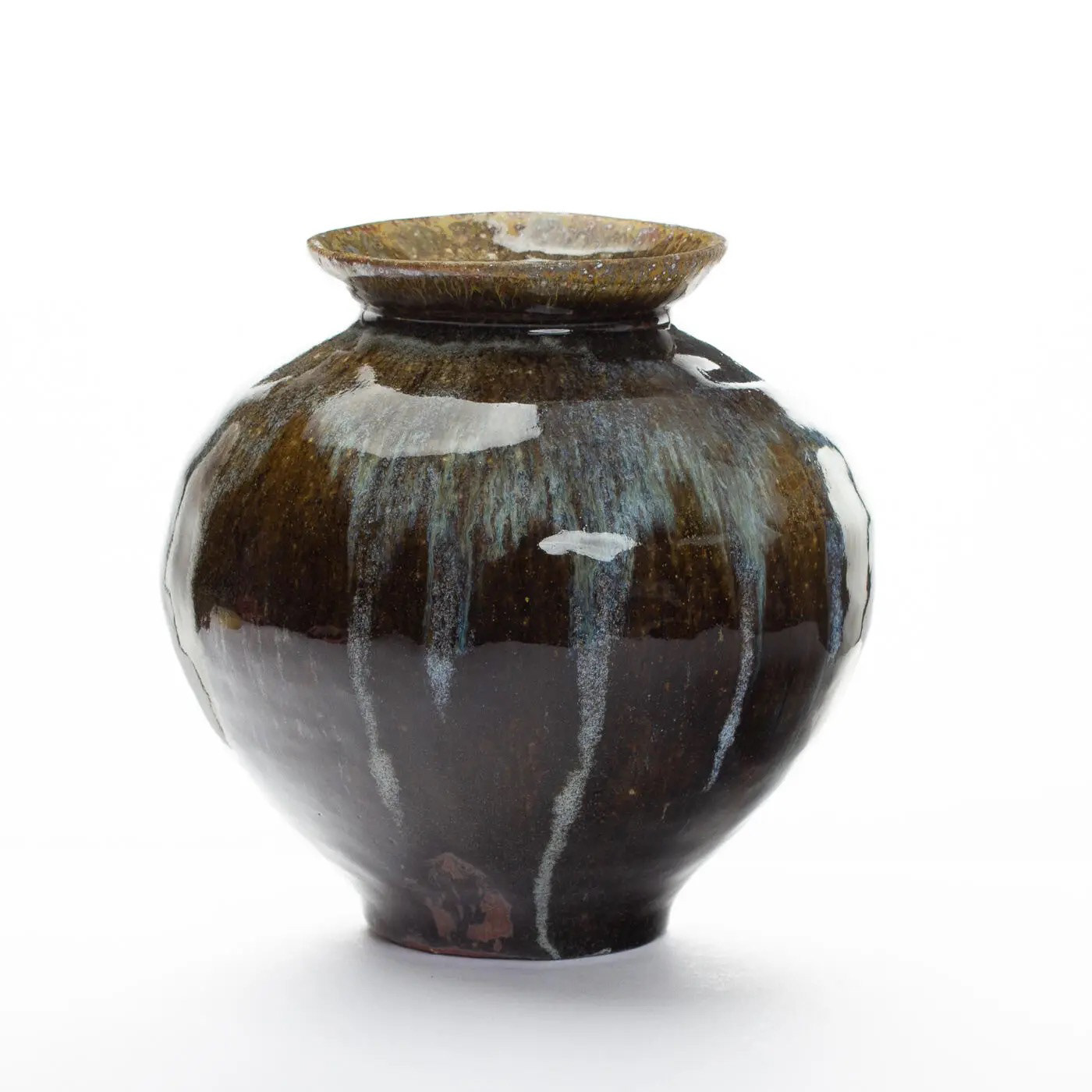
Image credit Matthew Blakely
Unurgent Argilla
I came across this artist when volunteering at Collect 2023. This is one of the first sources I looked into when starting my research on wild, foraged clay and why people work with it. Nina Salsotto Cassina, also known as Unurgent Argilla, creates site-specific vessels using wild clay to convey spatial narrative. She forages for her clays mostly in places she has a connection with and has got clay from around the world, documenting on her website photos of the locations and key-coded samples of test tiles from the clay in each place. Each vessel that is produced is a reflection of the place that the clay comes from. Her vessels are spheric, thrown on the wheel, and go beyond the linear, expected boundaries of familiar ways of working with clay.
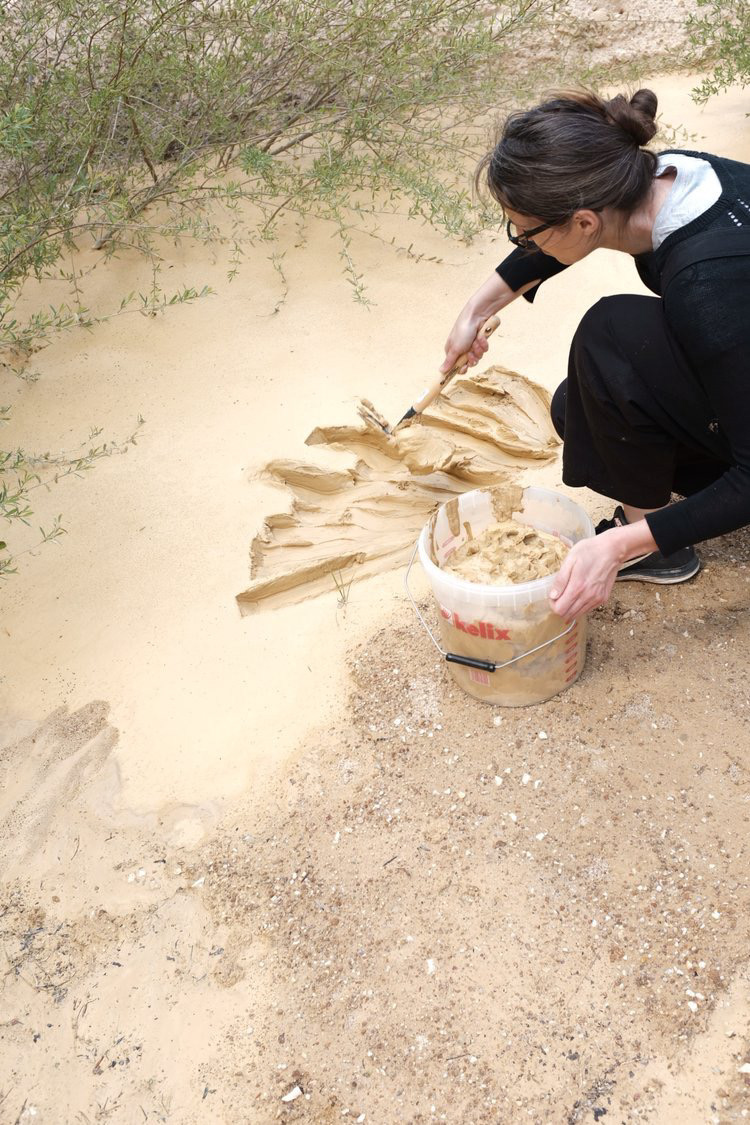
Photos sourced from https://www.unurgentargilla.com
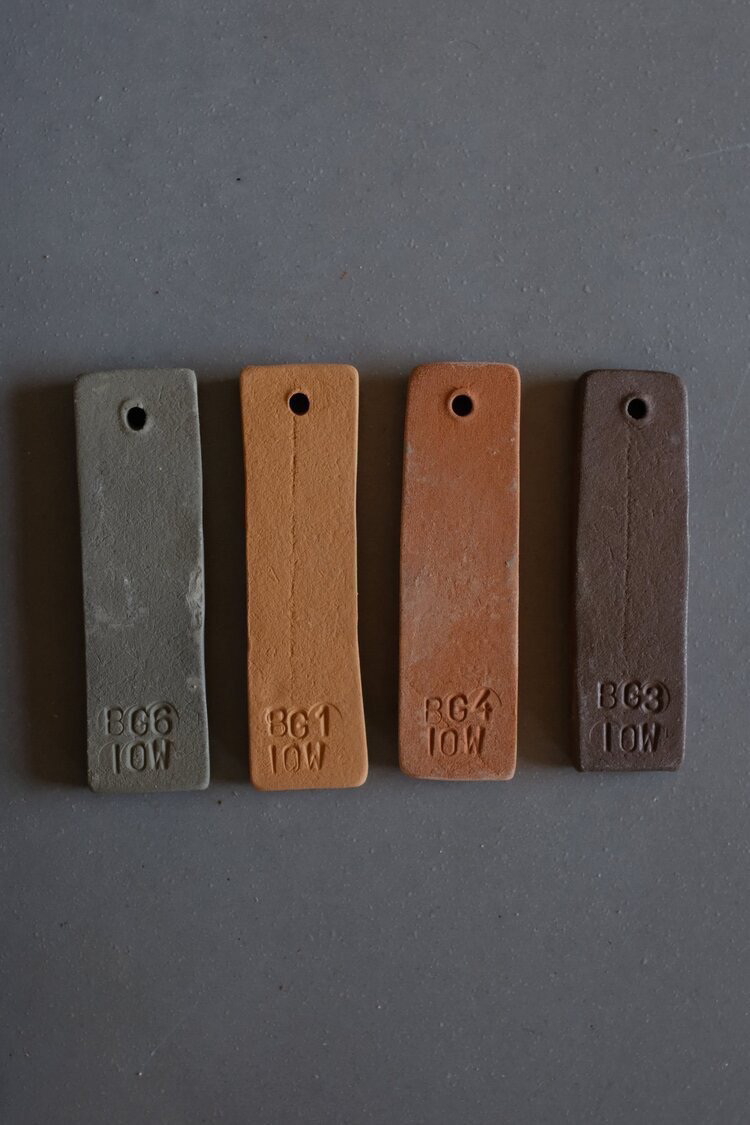
Photos sourced from https://www.unurgentargilla.com
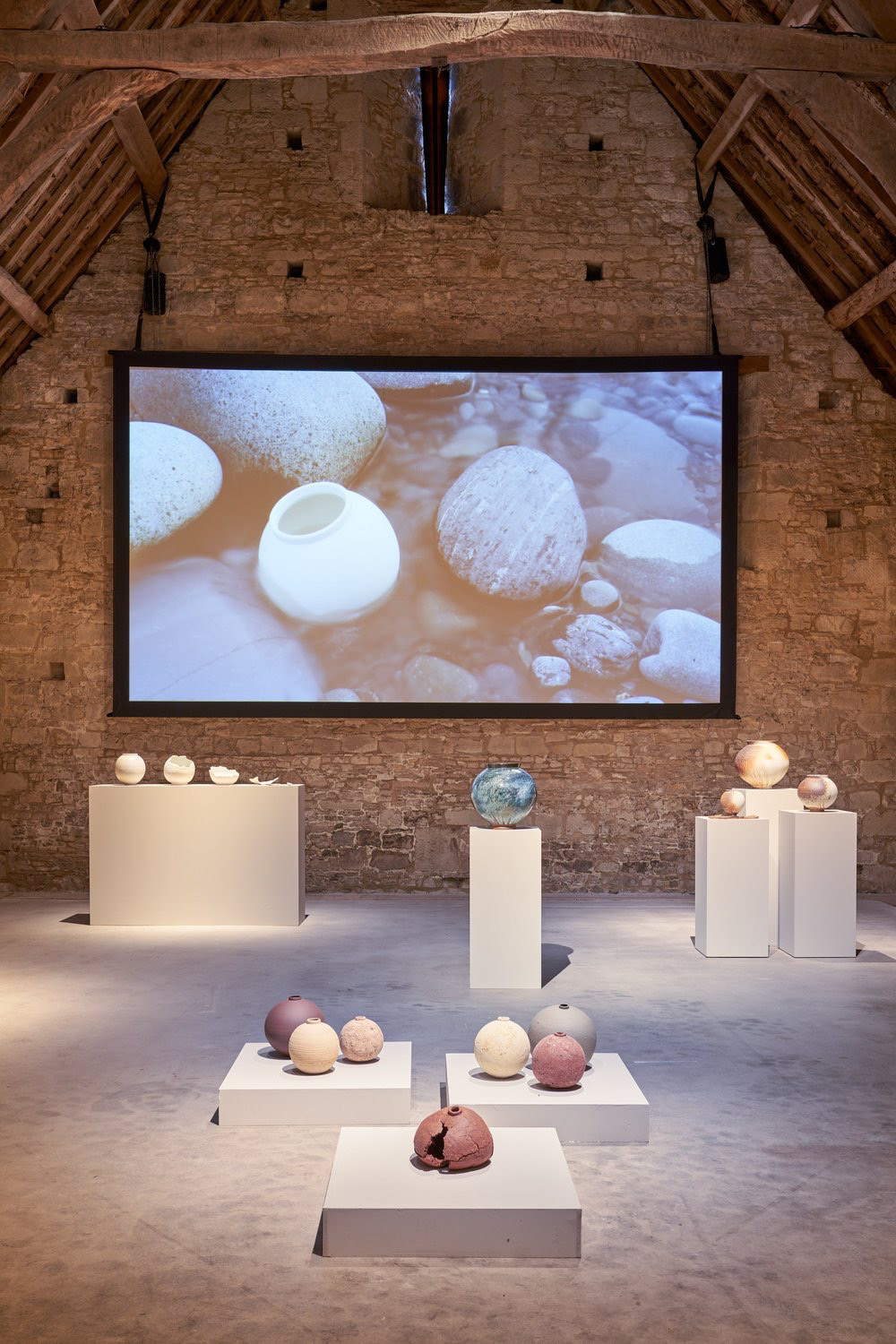
Photos sourced from https://www.unurgentargilla.com
Atelier NL
Atelier NL is a Dutch studio that works with raw, local, and natural materials. They work with clay, sand and wood to have a connection between people and the environment. They explore local clays from glaciers, rivers and oceans. The project Ponderwall is drawn from clay in the Noordoostpolder region of the Netherlands, where they dug clay from the farms in the area. During this process, the artists, Lonny and Nadine, who make up Atelier NL, got to know the farmers very well and would collect buckets of the earth from each farm plot to then process them to make clay tiles. These tiles then came together to create a map of the earth in the region, showing the tile's colour, texture and size.
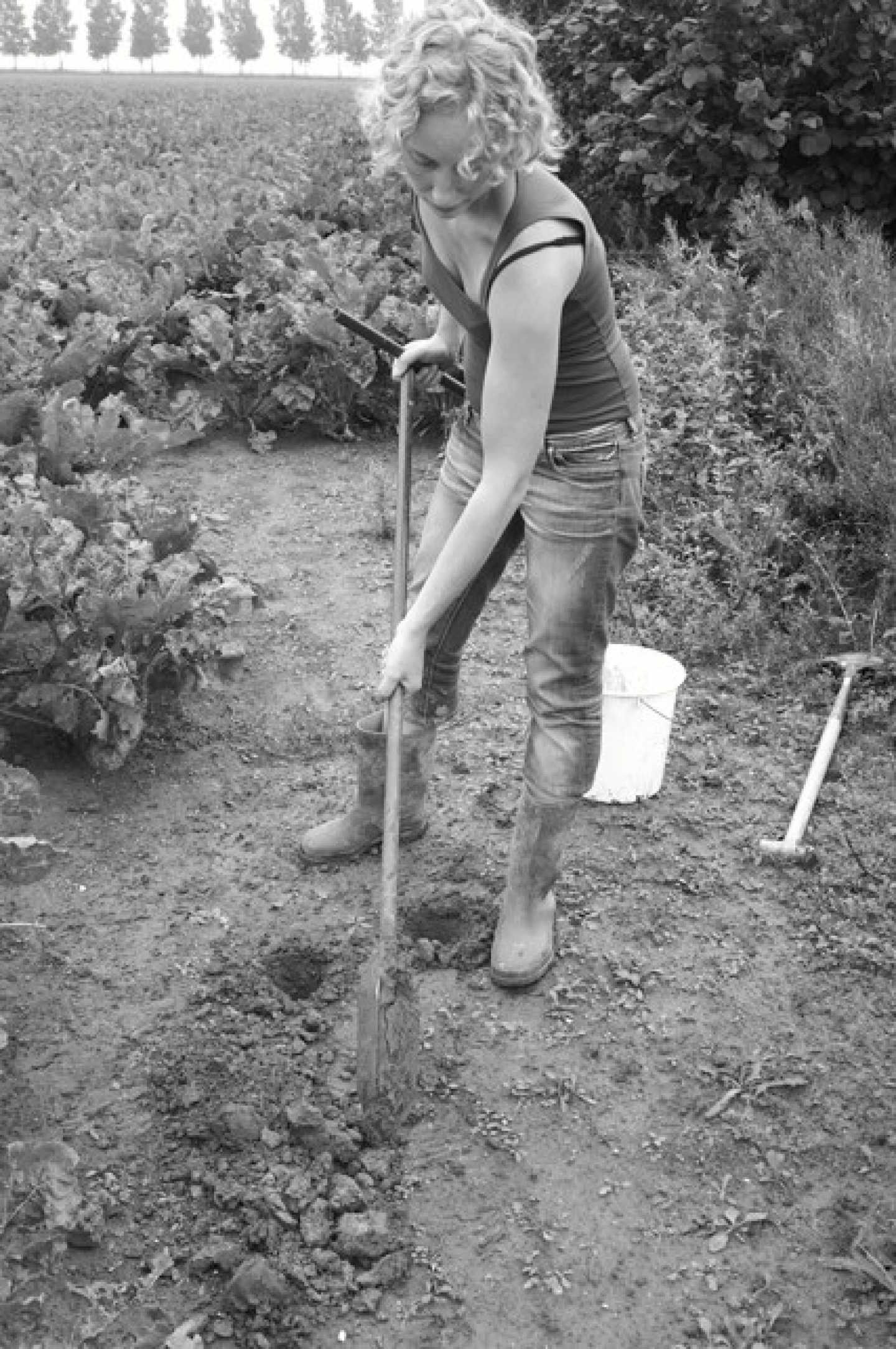
Photos sourced from https://www.ateliernl.com/projects/polderwall

Photos sourced from https://www.ateliernl.com/projects/polderwall

Photos sourced from https://www.ateliernl.com/projects/polderwall
Mitch Imberg
I have come across Mitch Imberg's work through Instagram. He is a ceramicist who specialises in studying and making with foraged clays, glacial debris and fossils found in Minnesota, where he is based. He is inspired by the diversity of geological forces which shape the earth, and how the vessels, sculptures and installations he makes create a dialect between geology, craft and making traditions. Through the resources and materials that he works with, Imberg aims to get a better understanding and showcase the "geologic and climatological events that have shaped the landscapes" around him. (Imberg, no date)
I am interested in Imberg's work, both for the similarities of styles between mine and his processes, but also for the aesthetic of the way he showcases his work. Through each of the bodies of work on his website, he has photographs of the locations which his material is gathered from, and also very high-quality images of the process of his works and finalised pieces. He explains the reasonings behind the body of work, and why he has decided to work in the way he is doing.

Reclamation Studies. Source http://www.mitchiburg.com/reclamationstudies
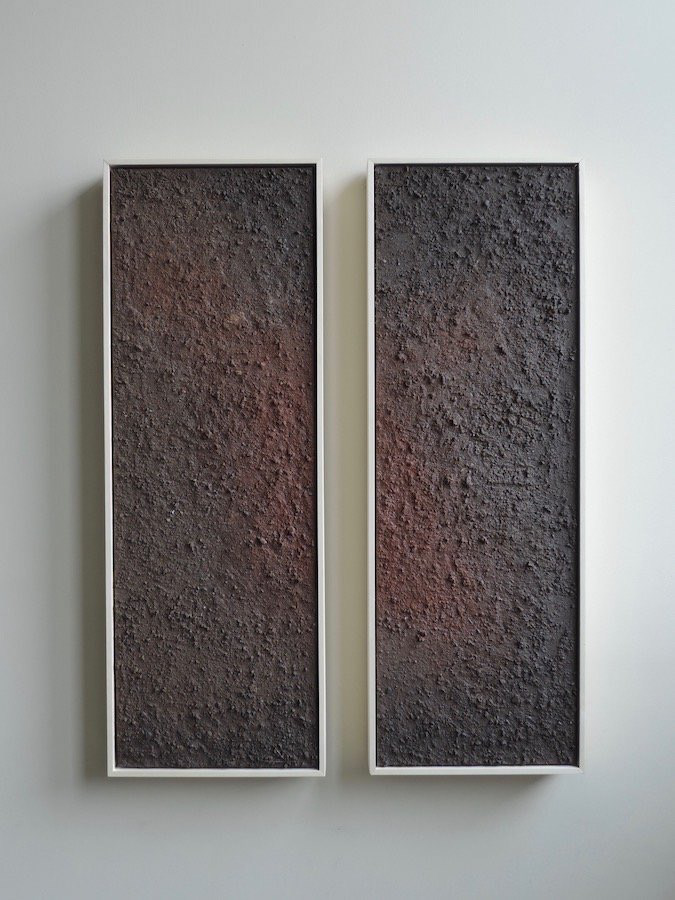
The Conservation of Matter. Source http://www.mitchiburg.com/theconservationofmatter
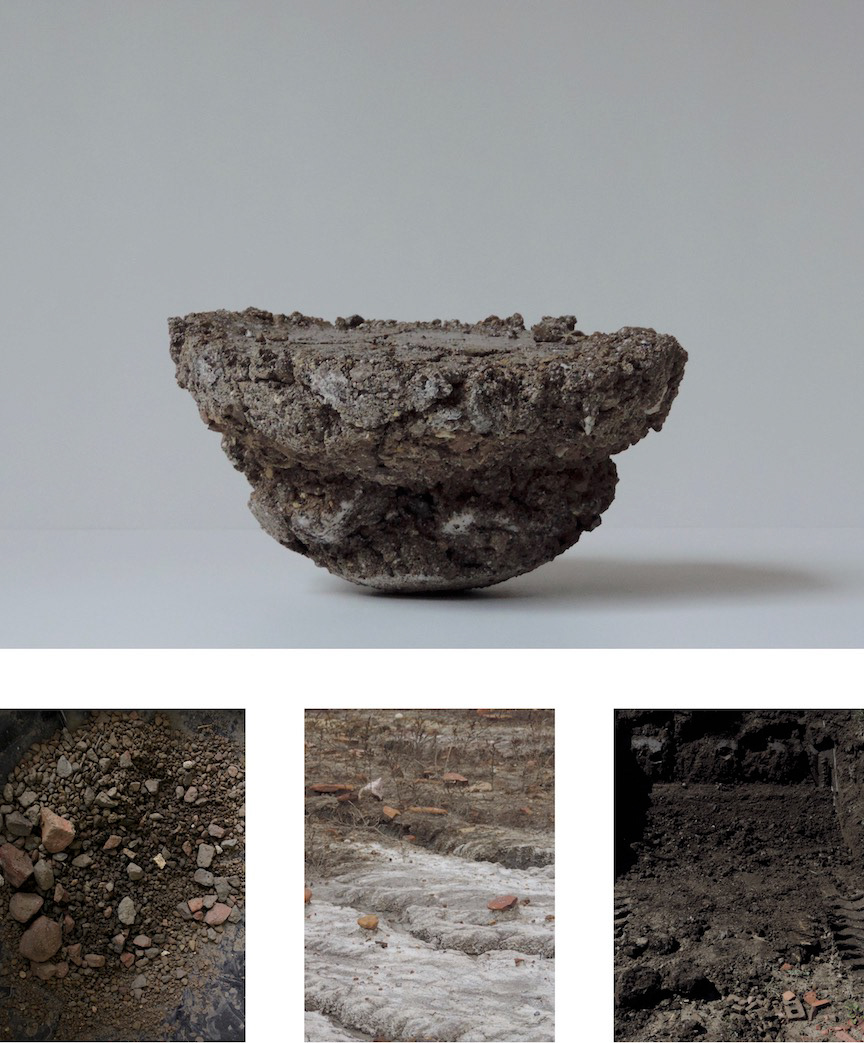
Conglomerate. Source http://www.mitchiburg.com/conglomerate
Tim Copsey
I had the opportunity to meet with the ceramist Tim Copsey, who works and lives in the Holme Valley in West Yorkshire, where I grew up. I visited him in his studio, to talk to him about his practice and see his work. We had an extremely insightful talk and I found out more about his working processes and the context of his work.
He makes ceramic sculptures which he fires in a wood smoke kiln in his garden. Tim often uses clay and glazes which he makes up from gritstone found in the Peak District. During our chat, he was very interested in my working style and how I am working with unfired clay from glacial clay. Tim has also worked with glacial clay before, gathered from the Holderness coast. Going forward into Synthesis and Resolution, I am eager to gather clay from this area, as it is the same kind of glacial clay that is found in the caves where I have been getting my clay from so far.
Tim suggested that we collaborate, as I am interested in smoke firing my work, and he would like to get to know more about the clay that I am using. He has very kindly offered that I use his smoke-fired kiln to fire my pieces, and in return, I will do some clay firing tests and also complete more tests on the clay itself so we can both use it.
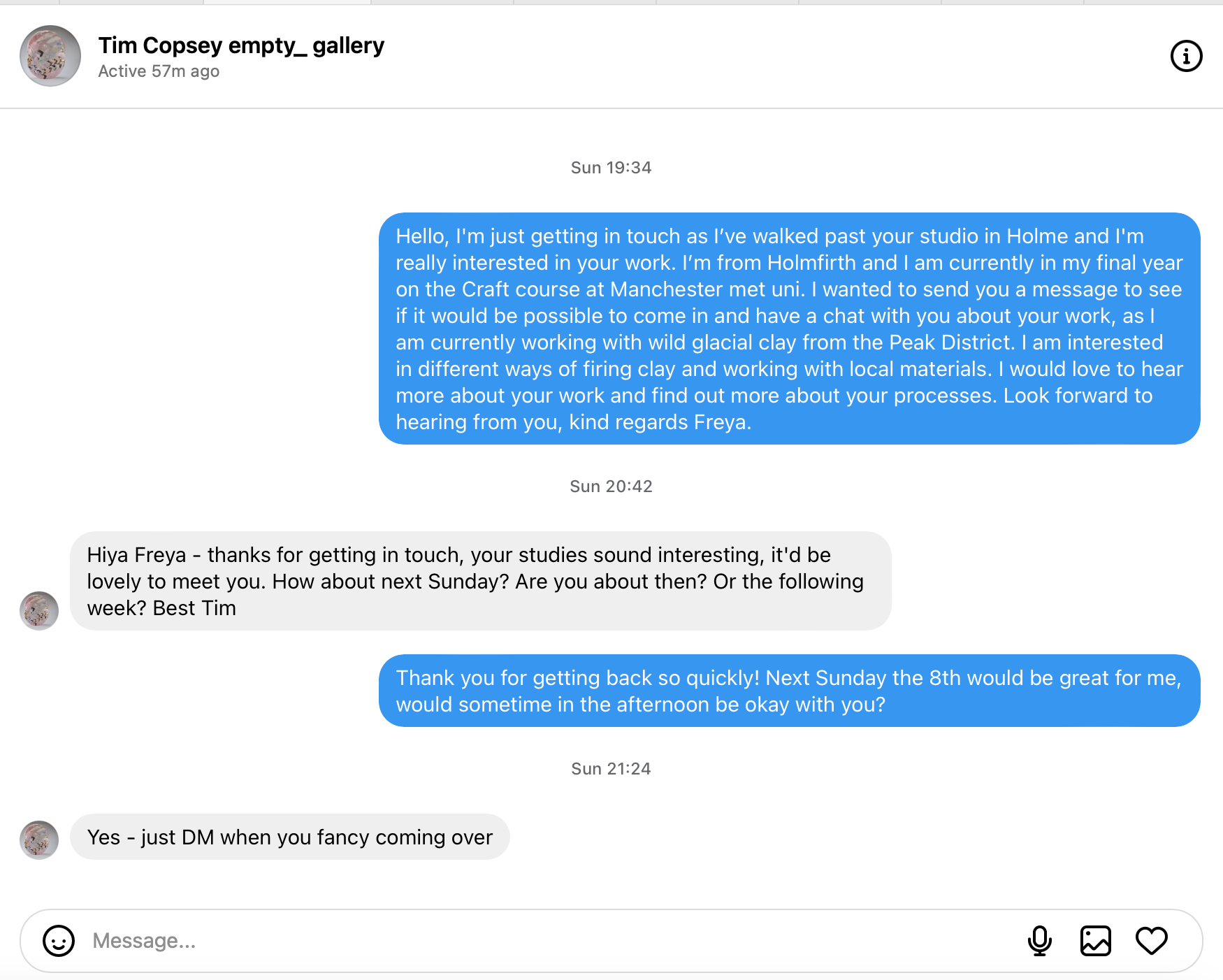
Dm conversation to organise meeting
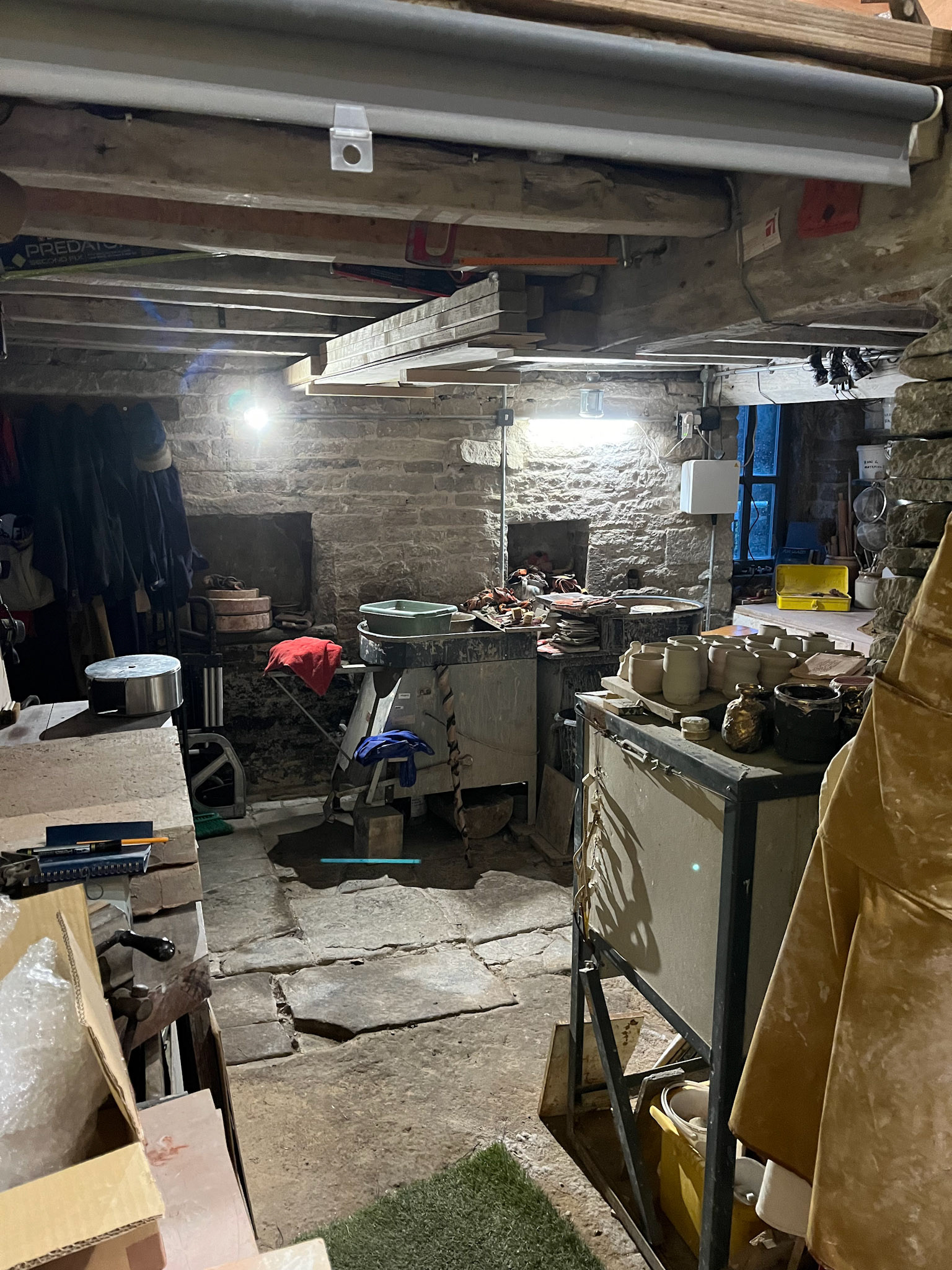
Photos from Tim's studio.

One of Tim's pieces in his studio garden, next to the smoke-fired kiln.
film festivals
I have been informed about the Manises Ceramic Film Festival, which is an international ceramics-dedicated film festival with applicants from across the world. I am interested in applying to this, as they also have a student section for students to submit their films and have a chance for their films to be shown during the festival. This would be a great opportunity to get the films I am making out into a wider community and hopefully reach more international audiences.
There is also the Real to Reel Craft Film Festival, hosted by the Crafts Council, which I have been researching. Even though it is no longer going on, I have been able to look back at previous years to get a sense of the kind of films that are winning awards. As I am new to filmmaking, I am interested in finding more craft films, as this is an area of craft in which I can picture my work sitting due to the storytelling and process-focused nature of my work.
Reflection
Throughout this project, my external research has been a driving factor in supporting my practical work. Through the books I have read, the people I have talked to and the makers I have researched, I have been greatly inspired to create a project that honours my love for the natural earth. I am looking forward to where I will take this project next, and have many exciting ideas and opportunities going into the new year which will support my love for making with the land.

